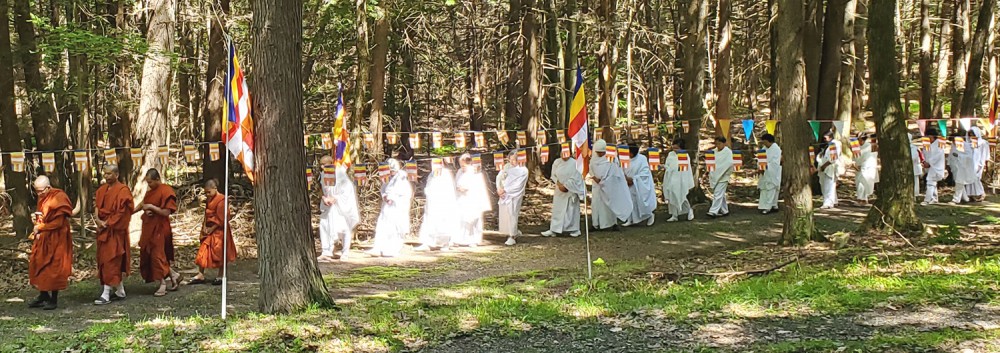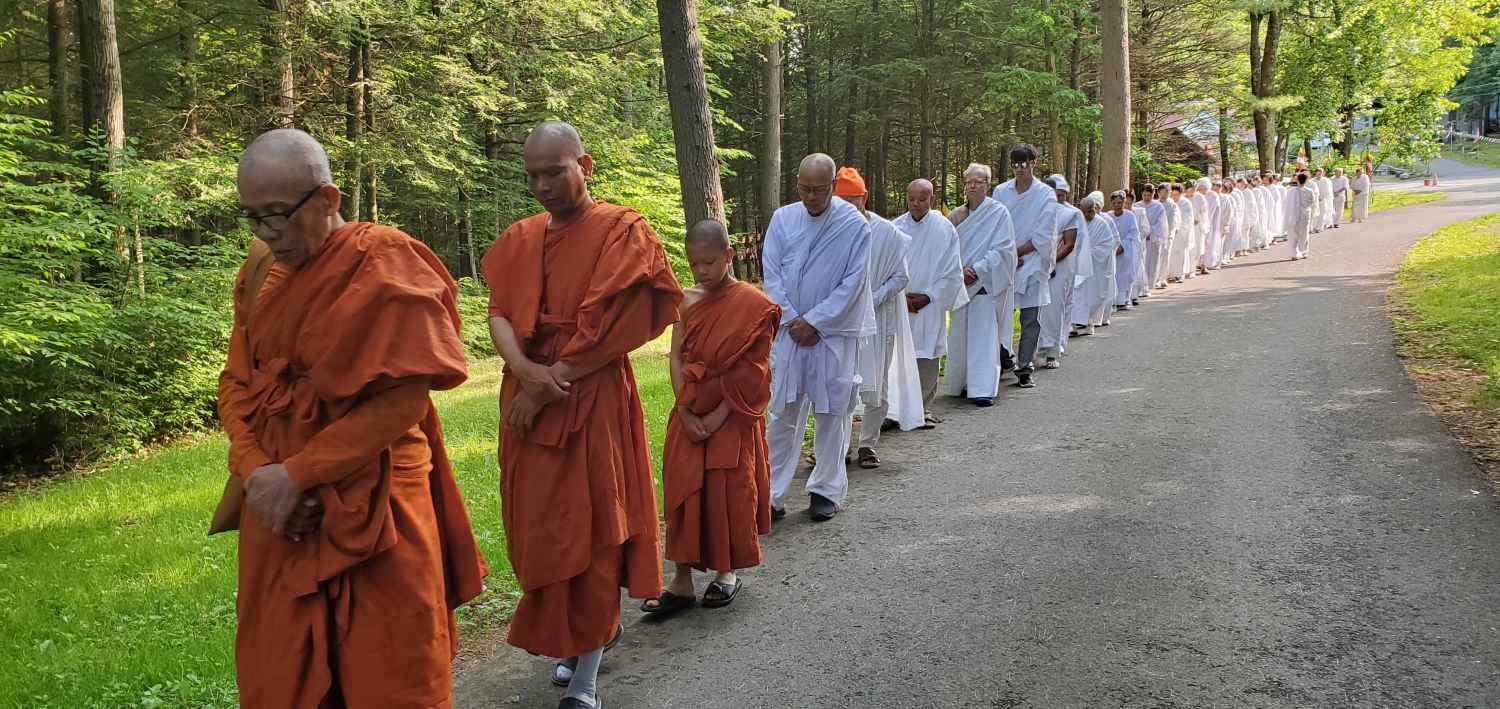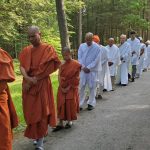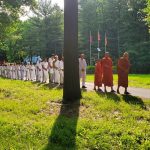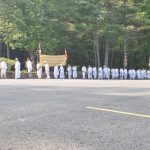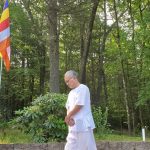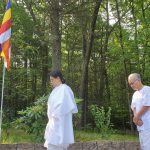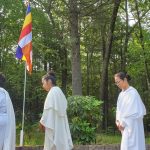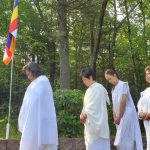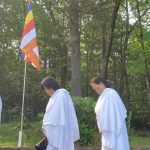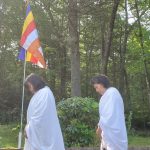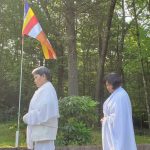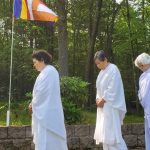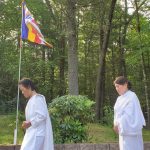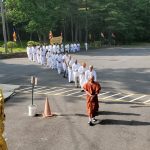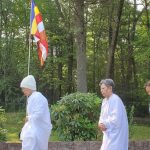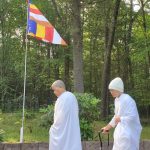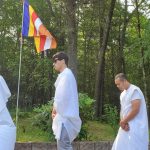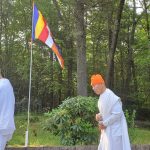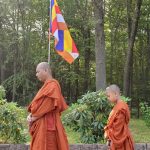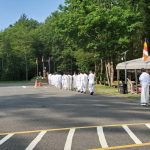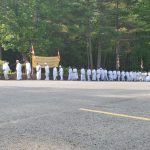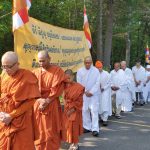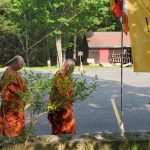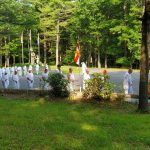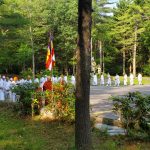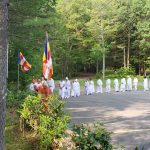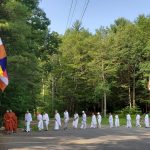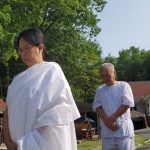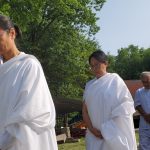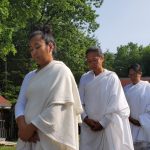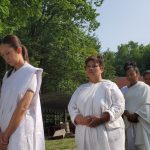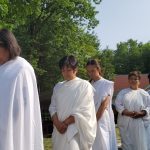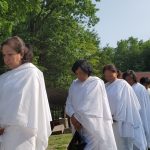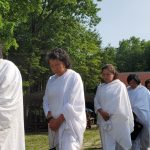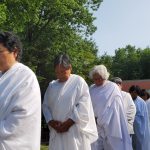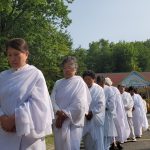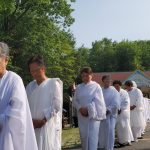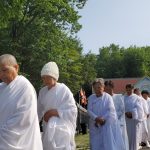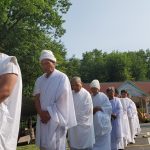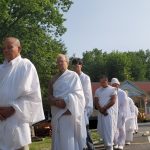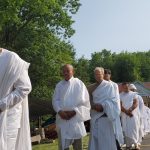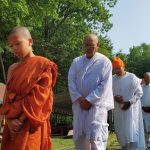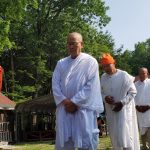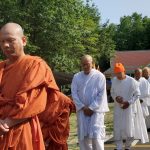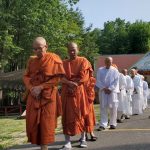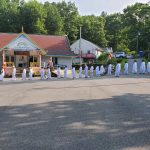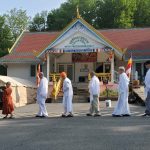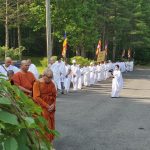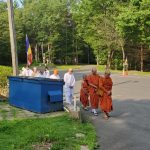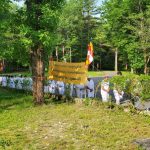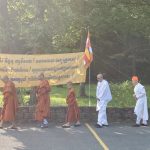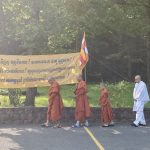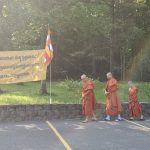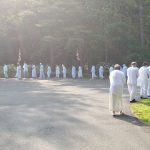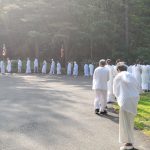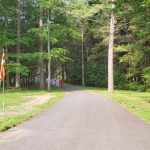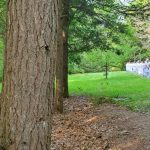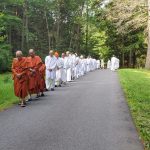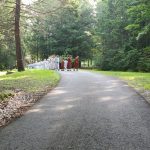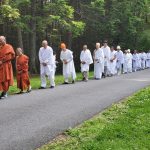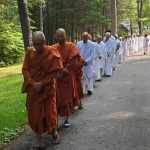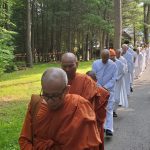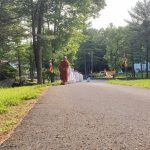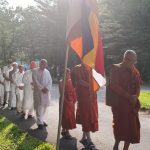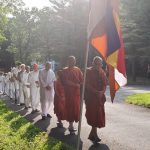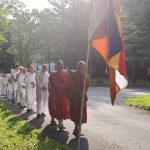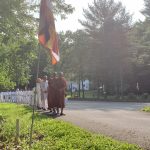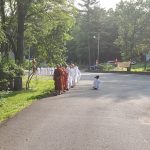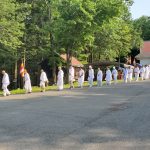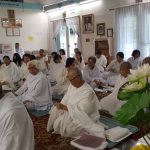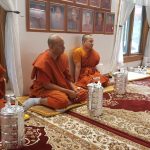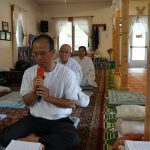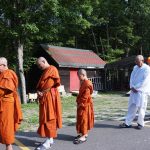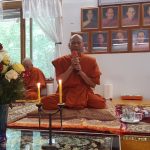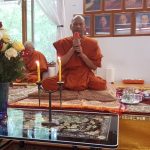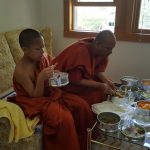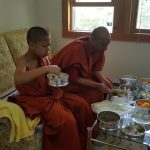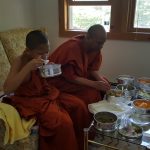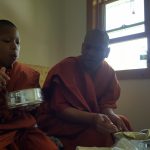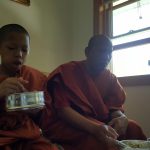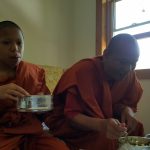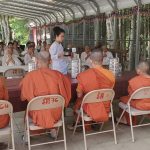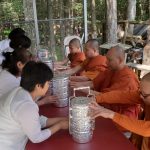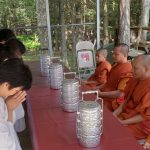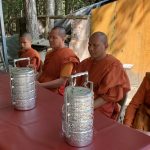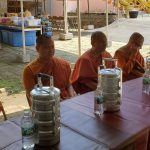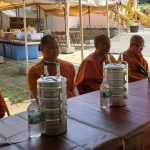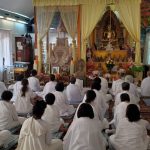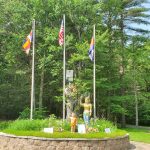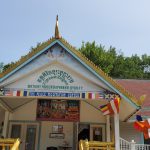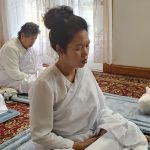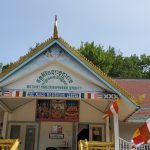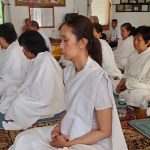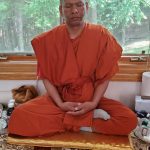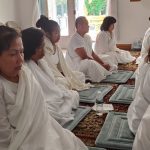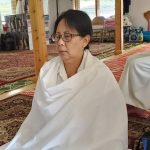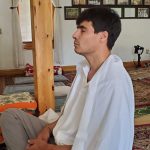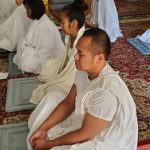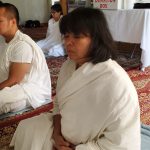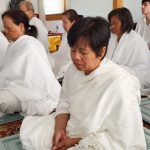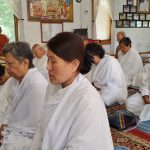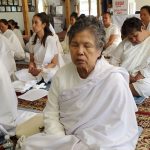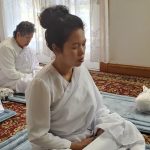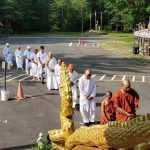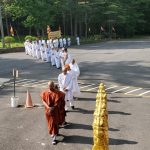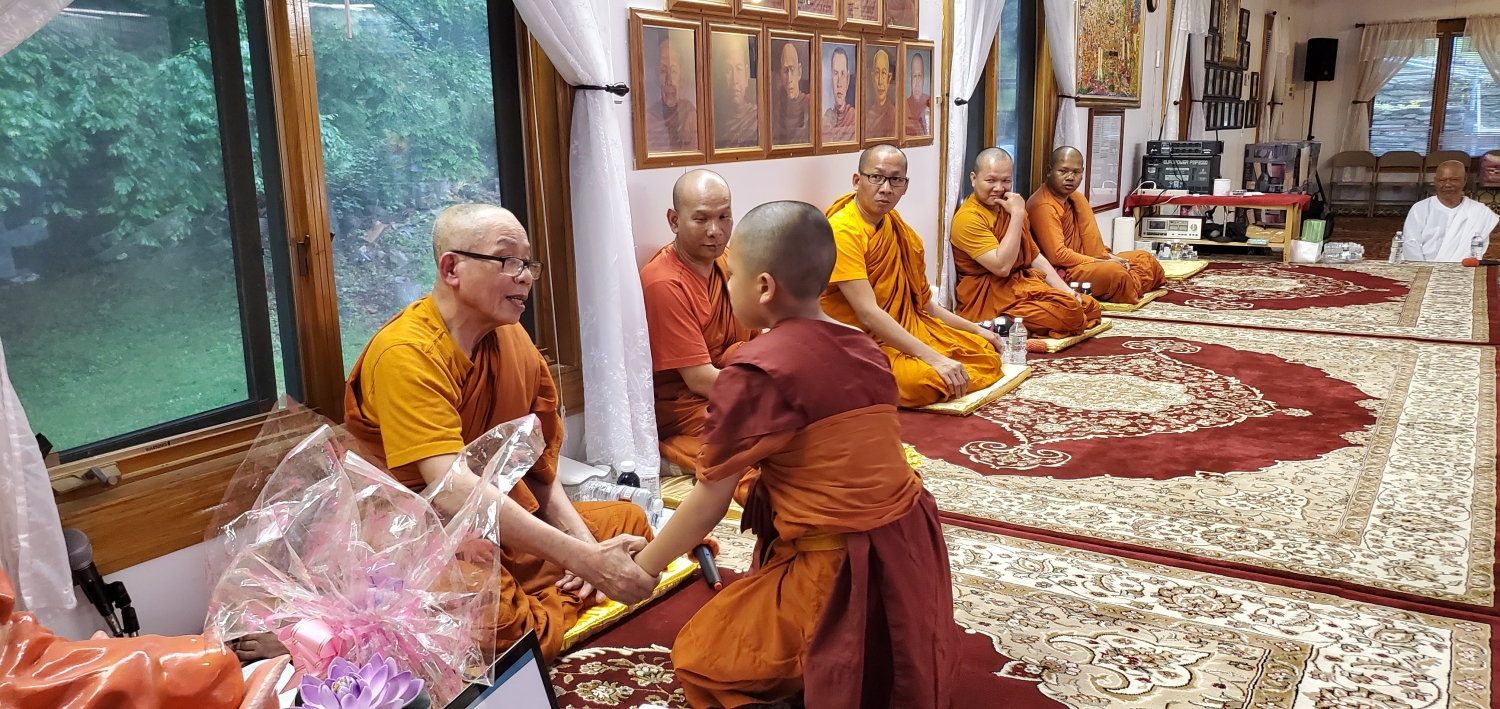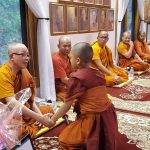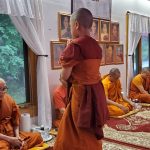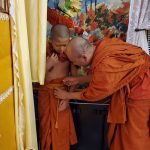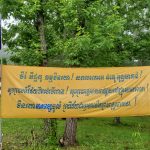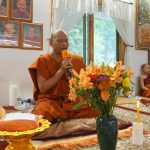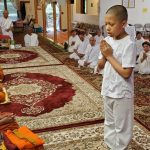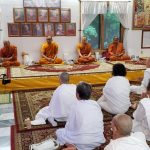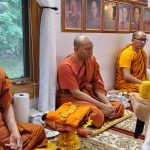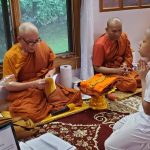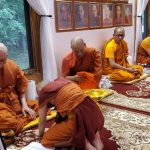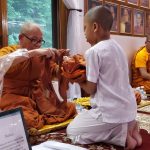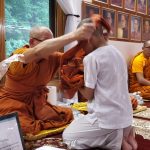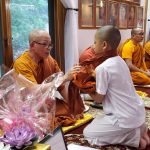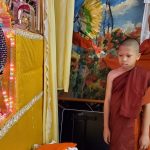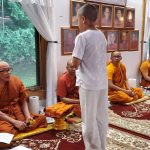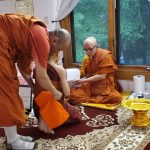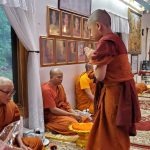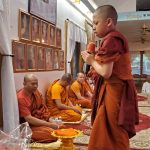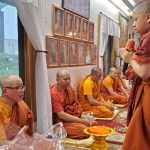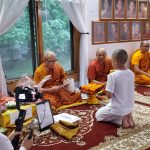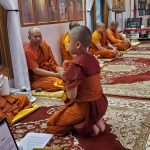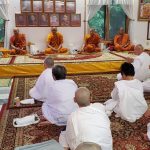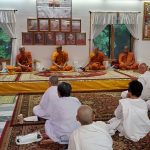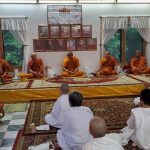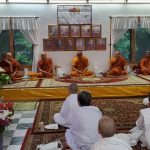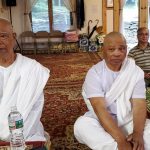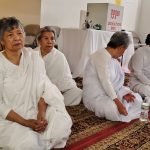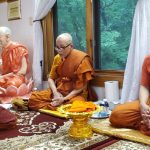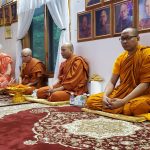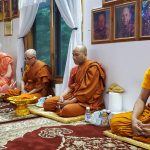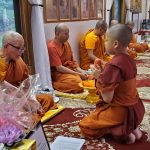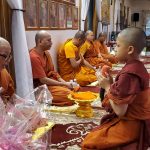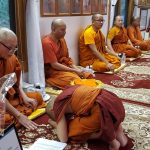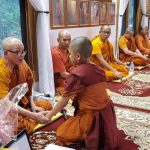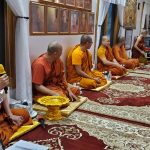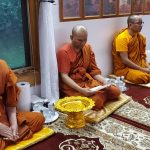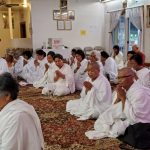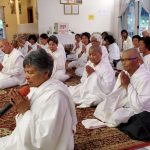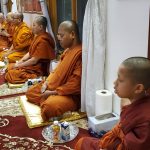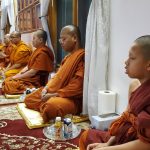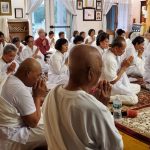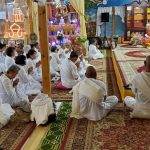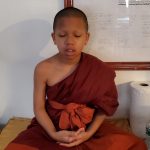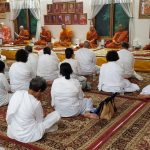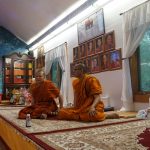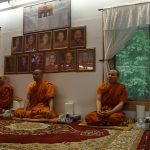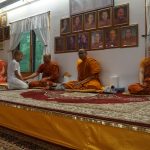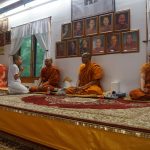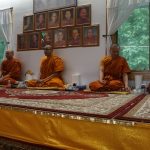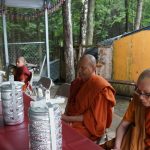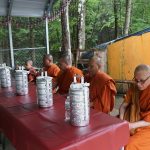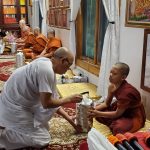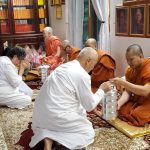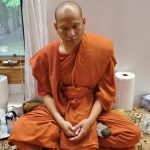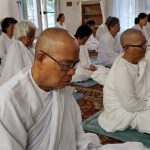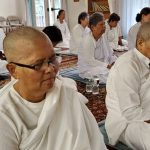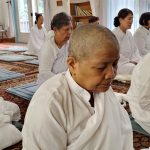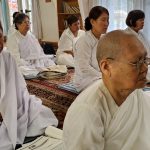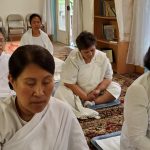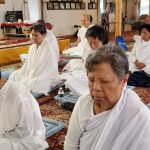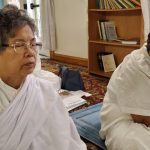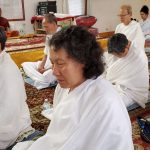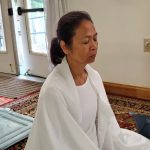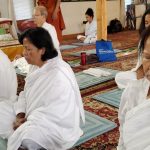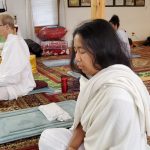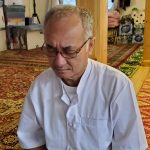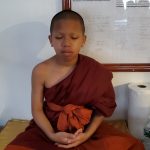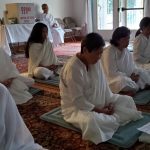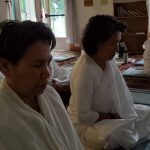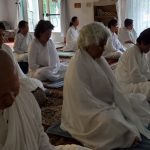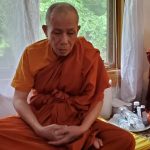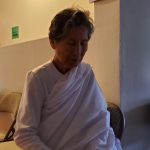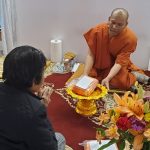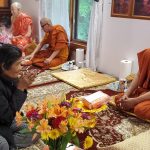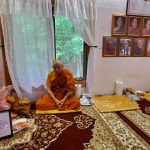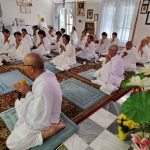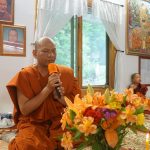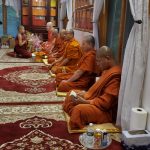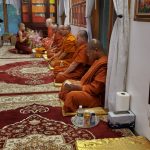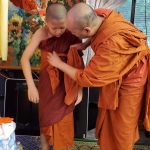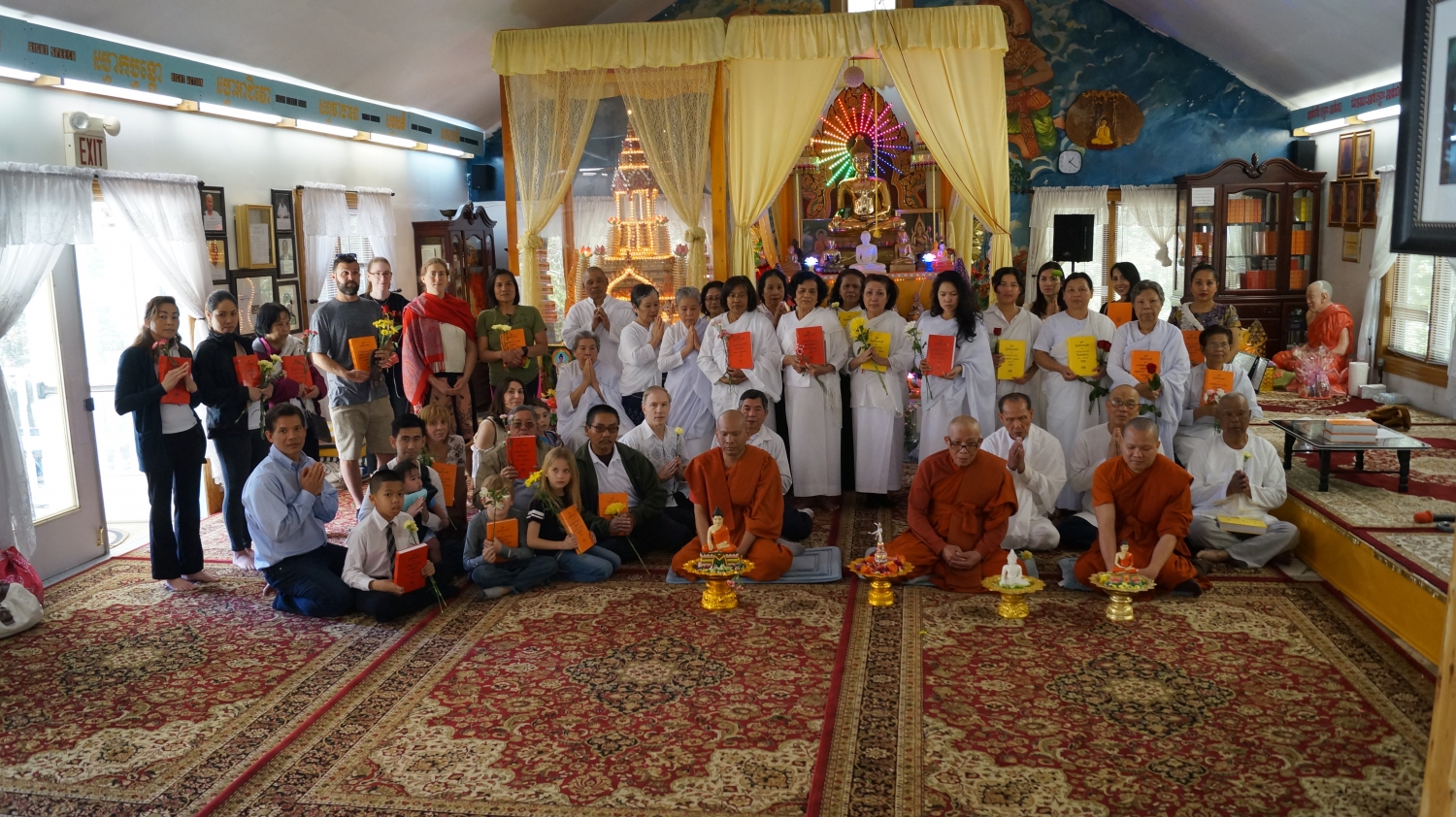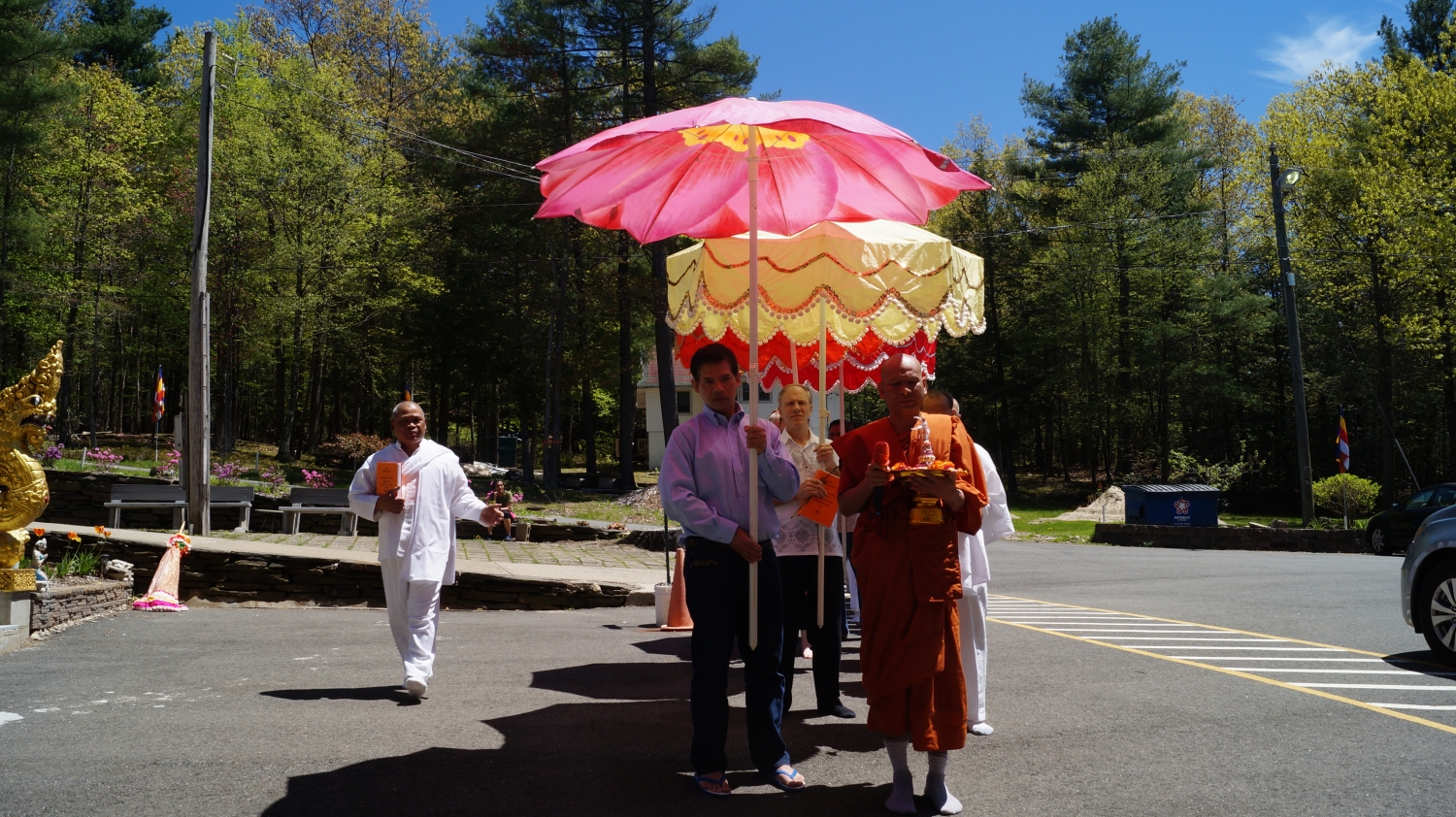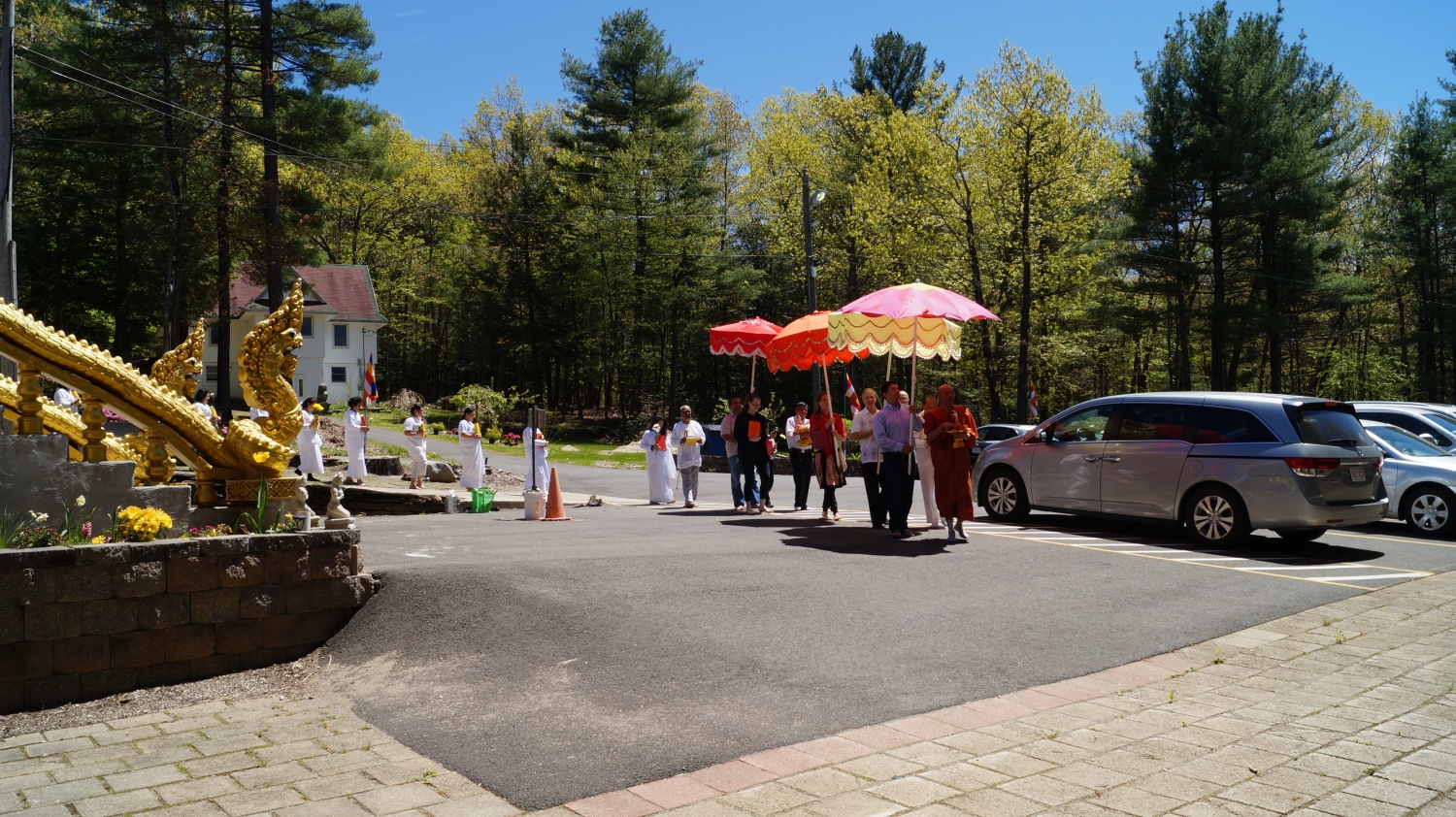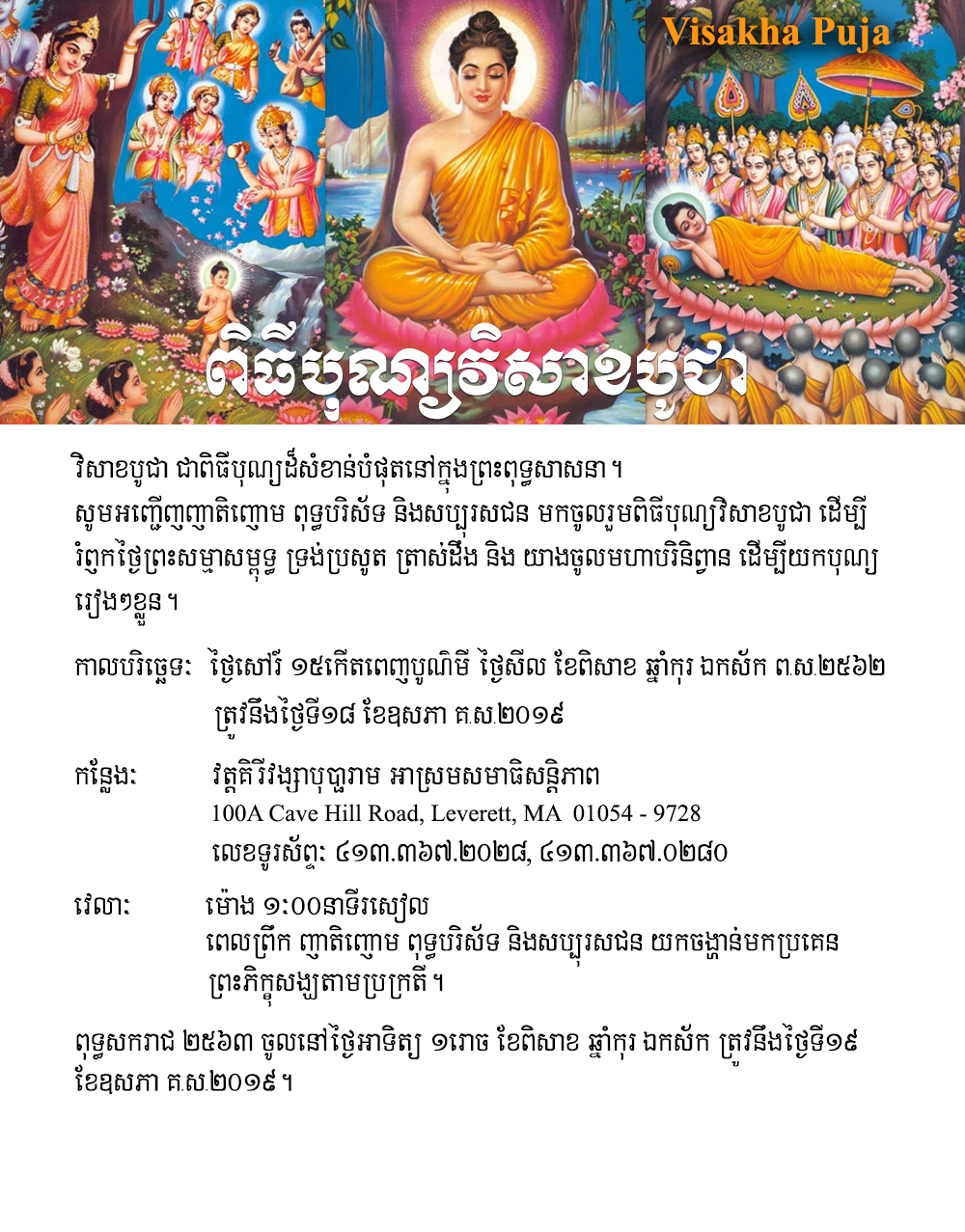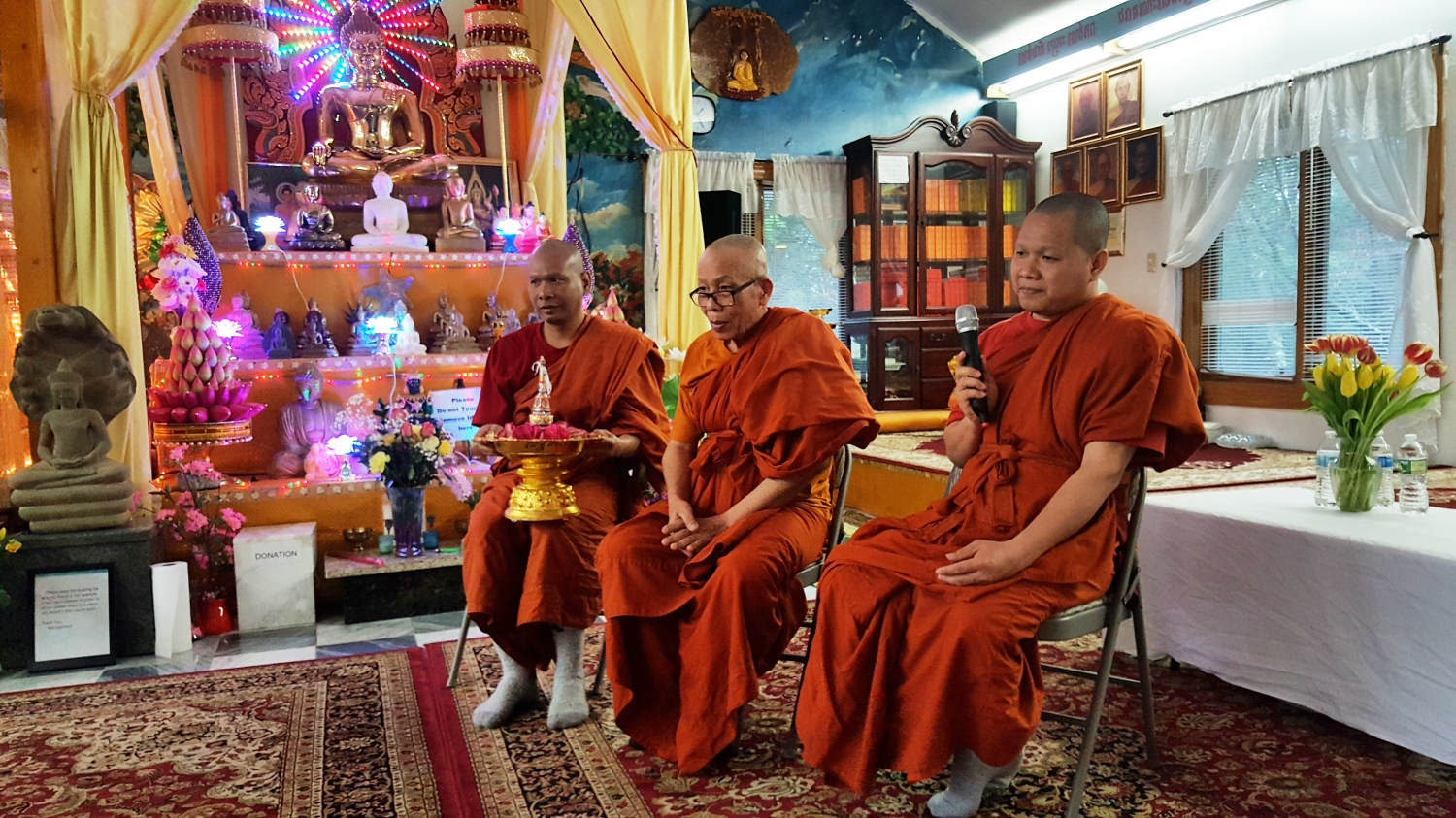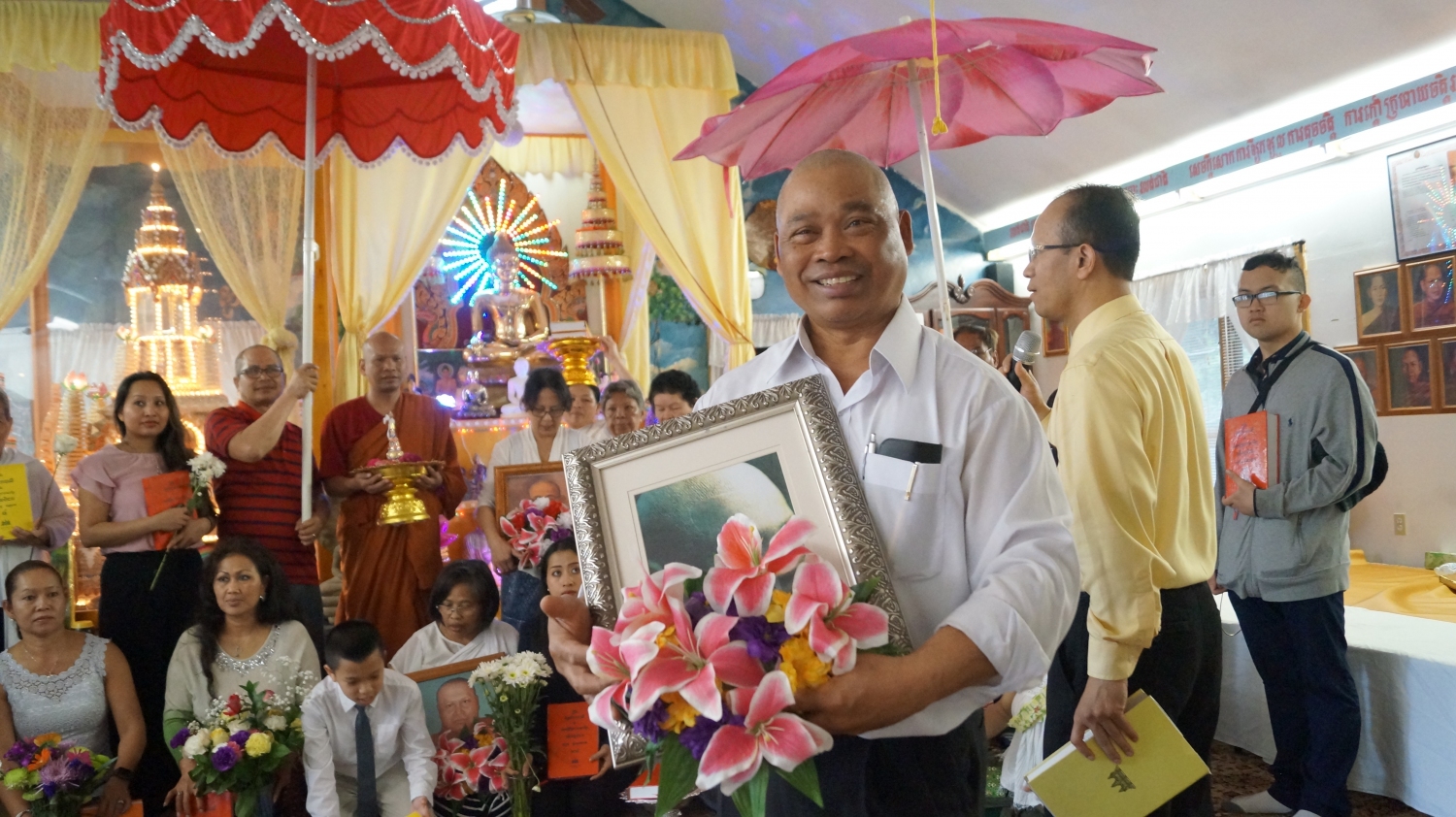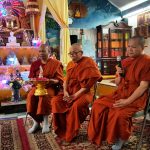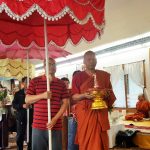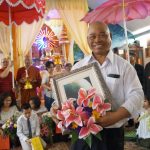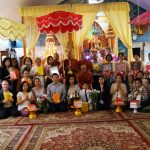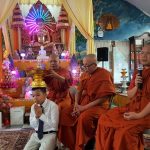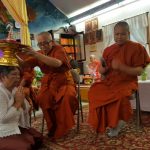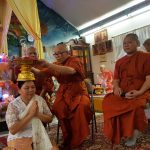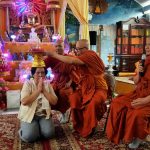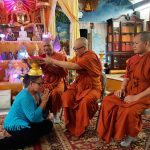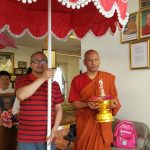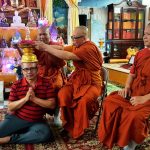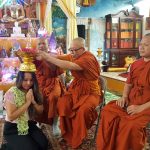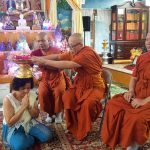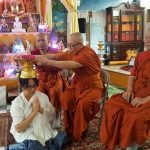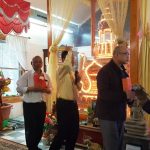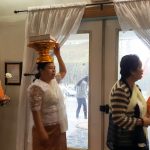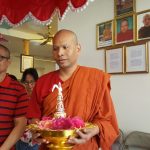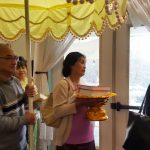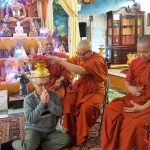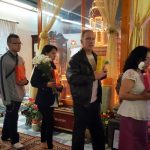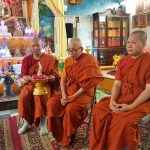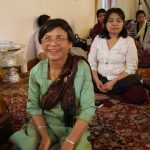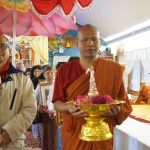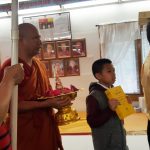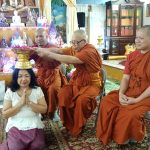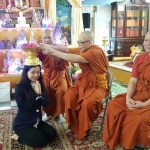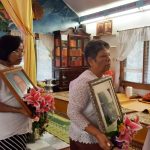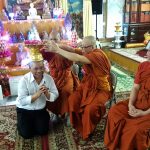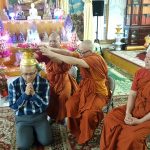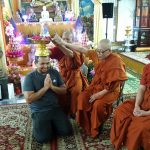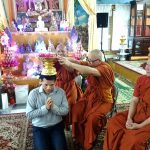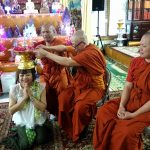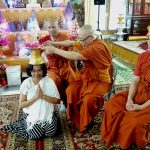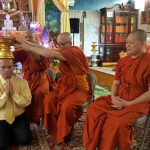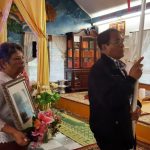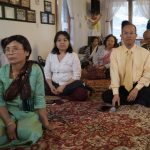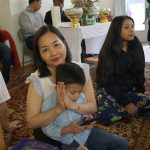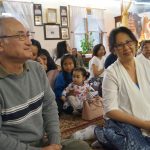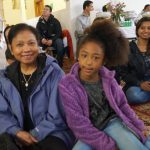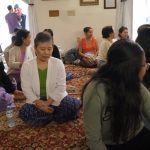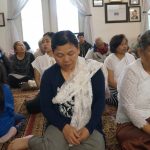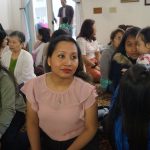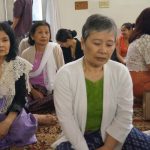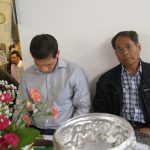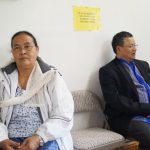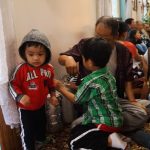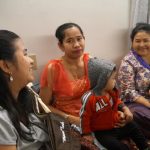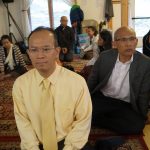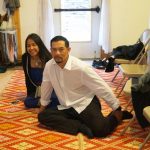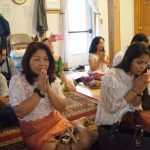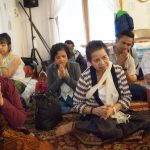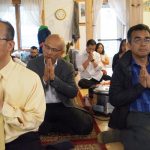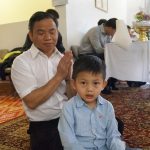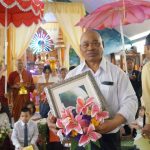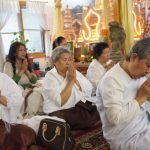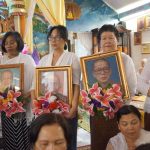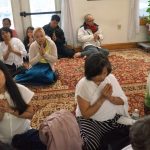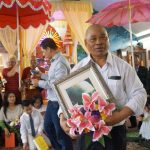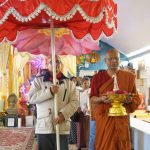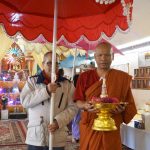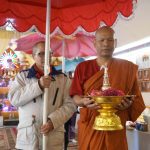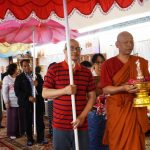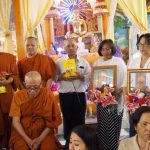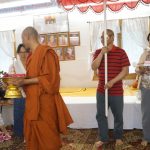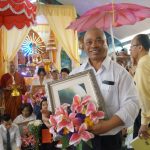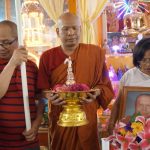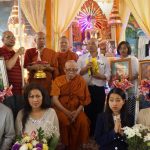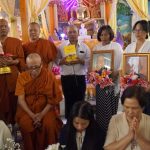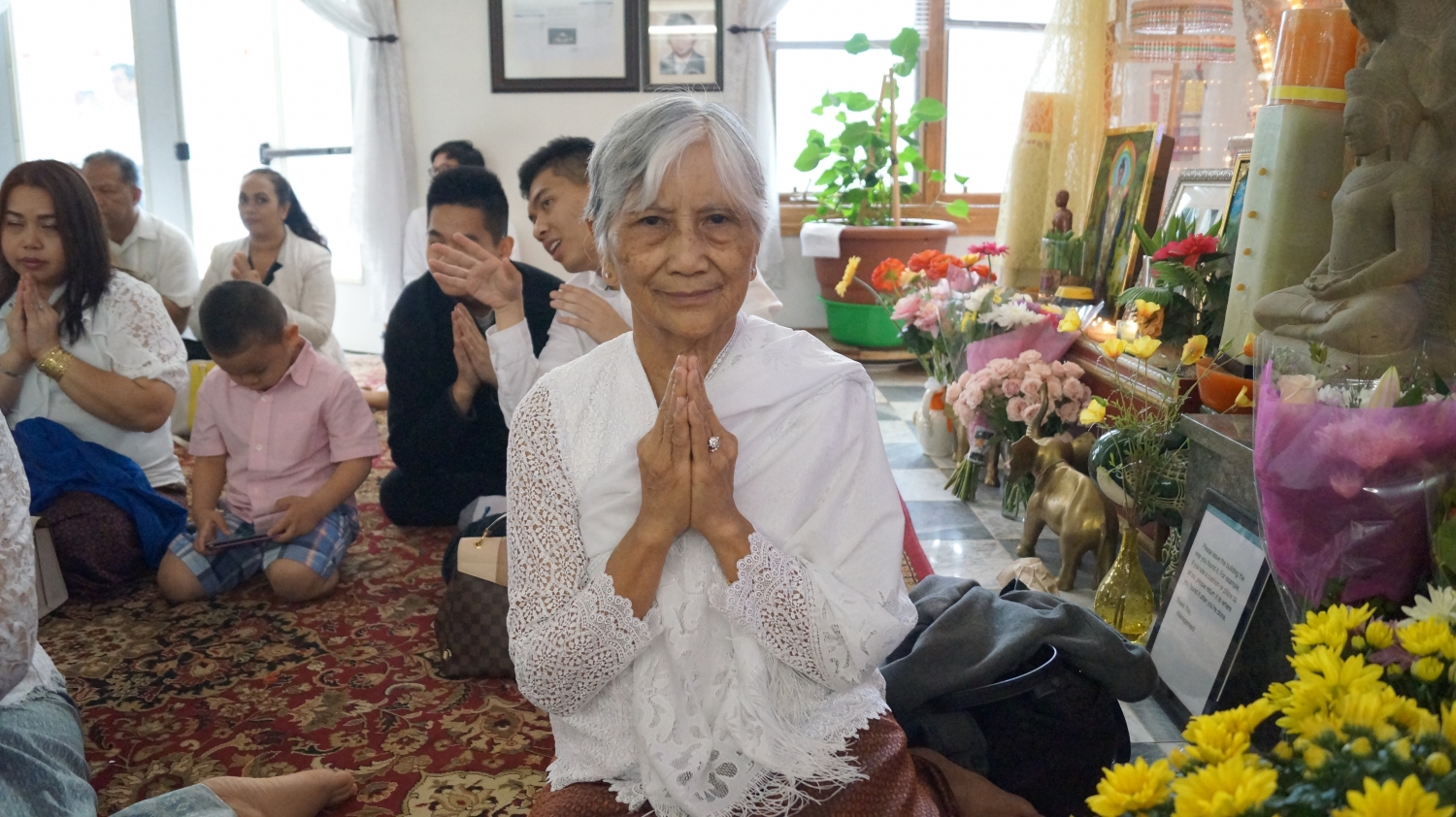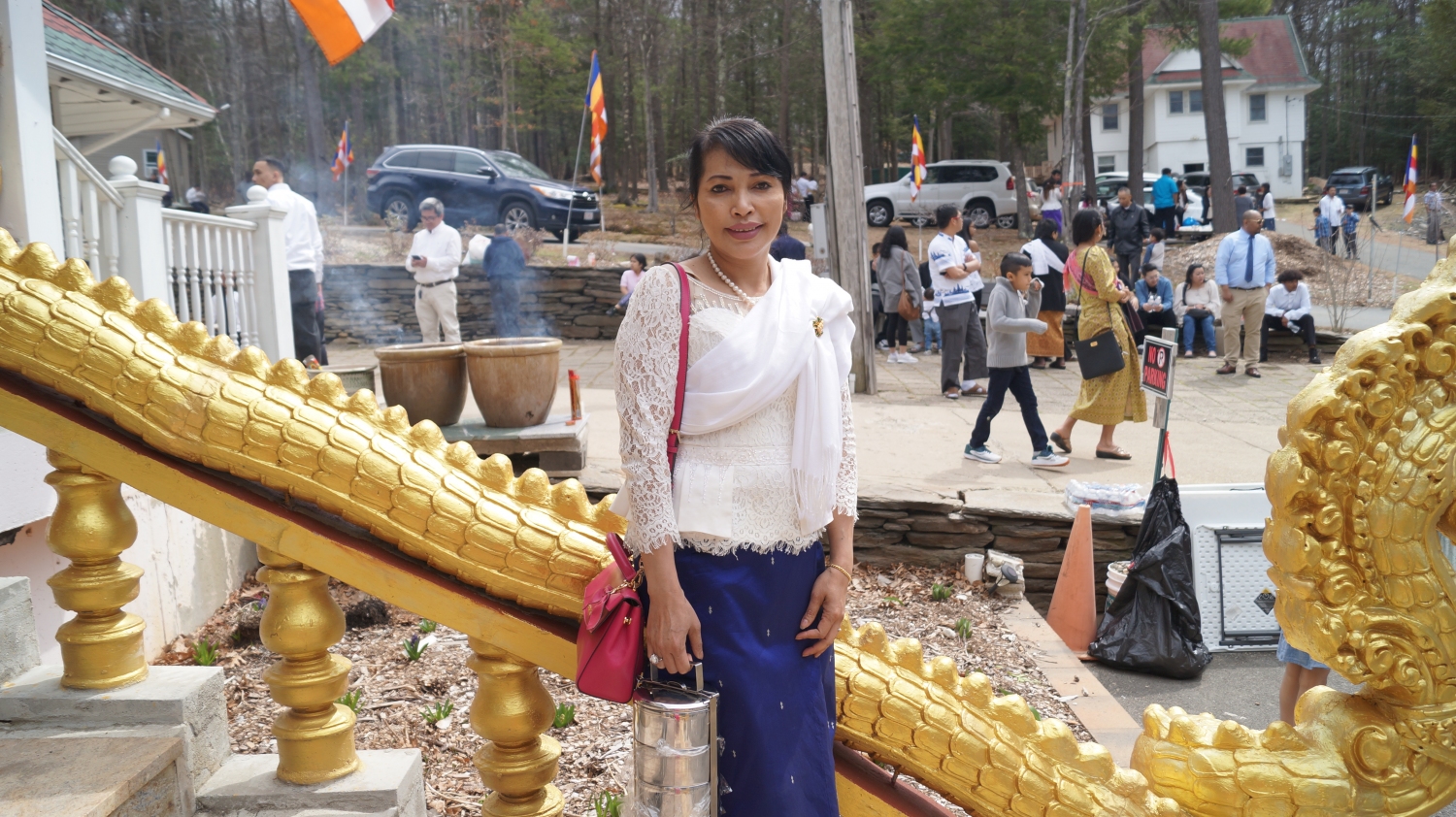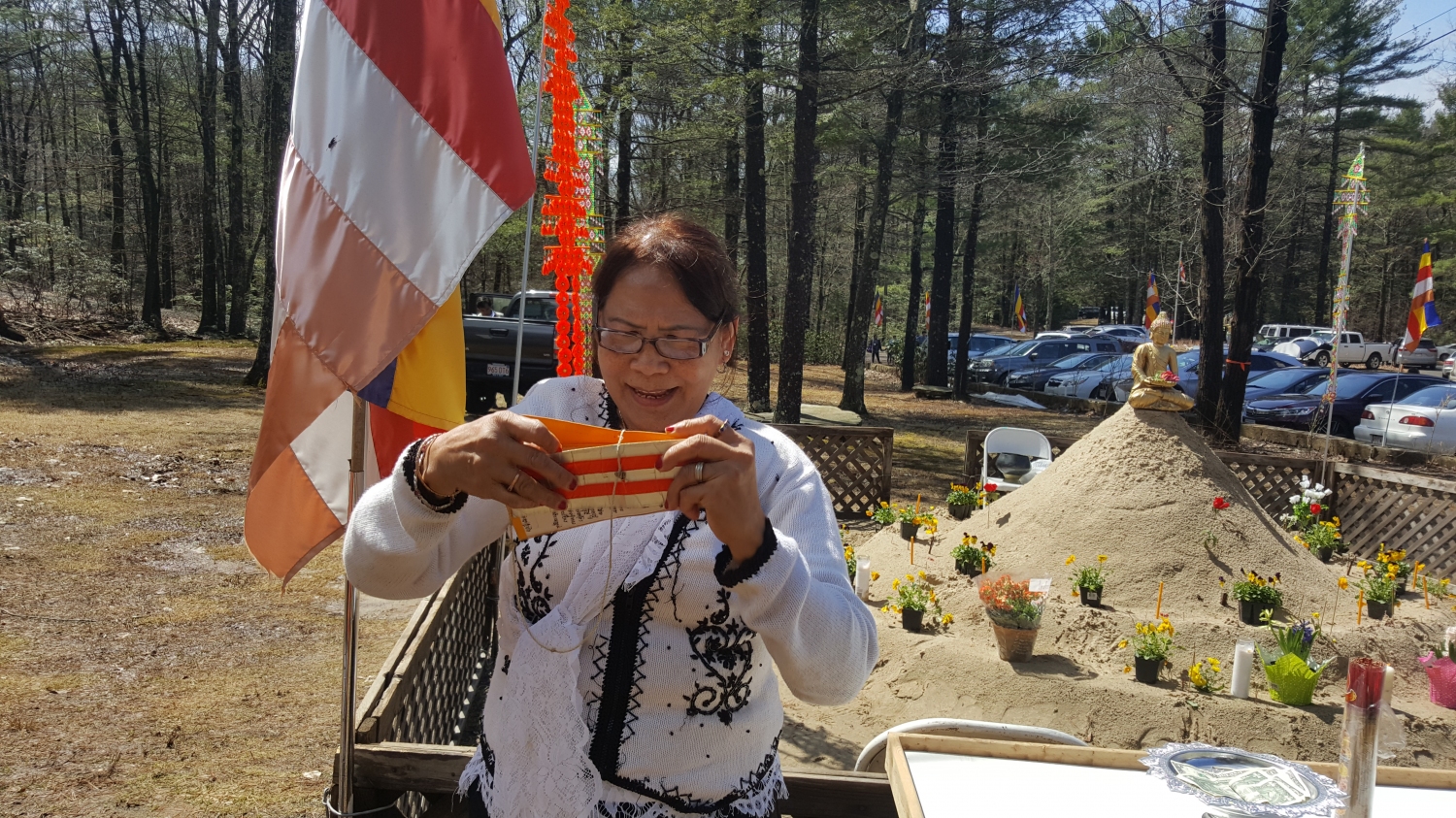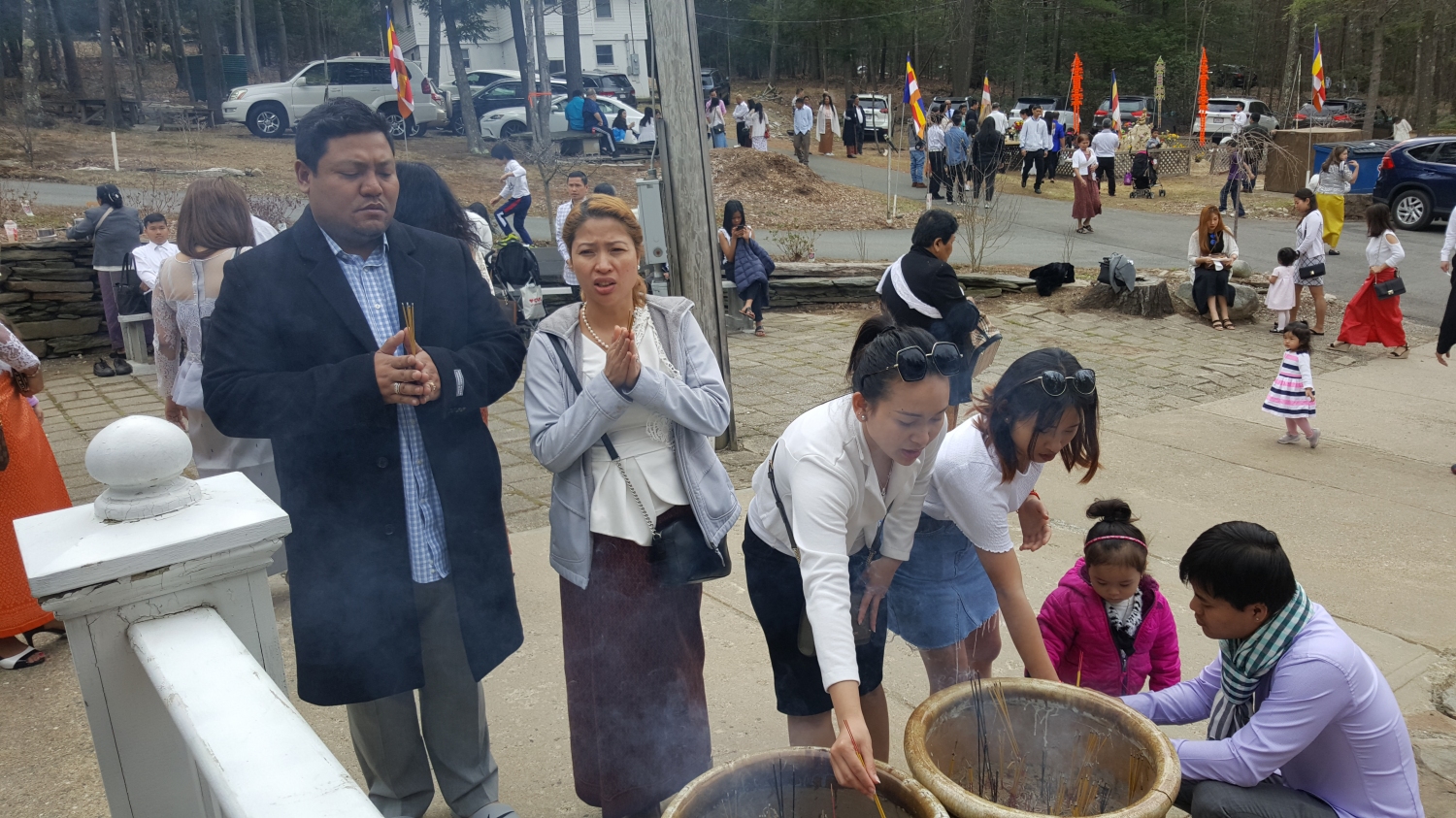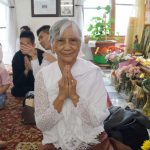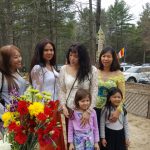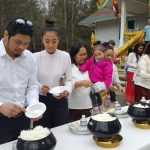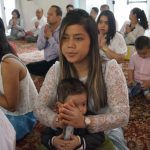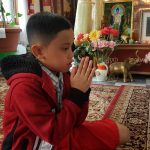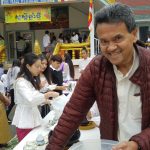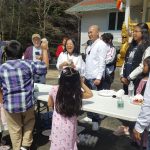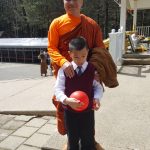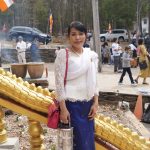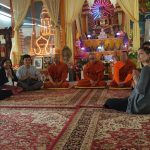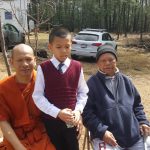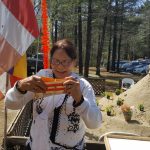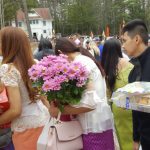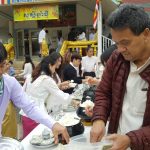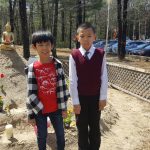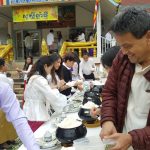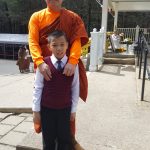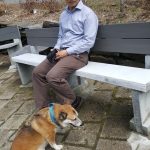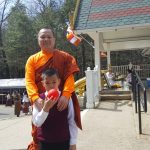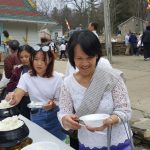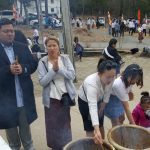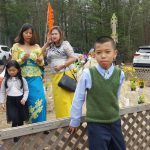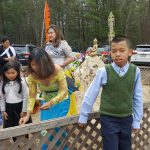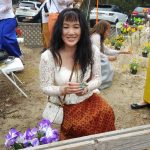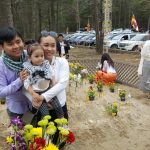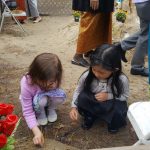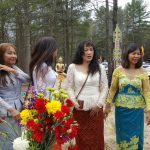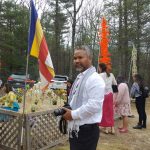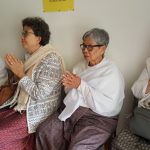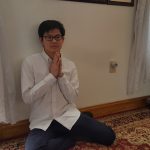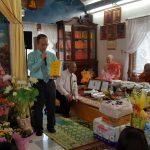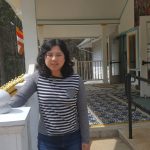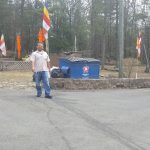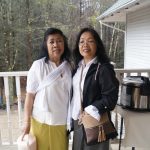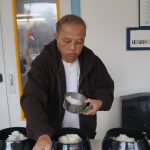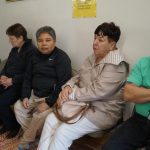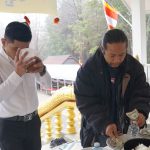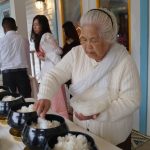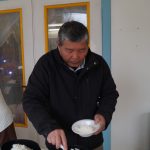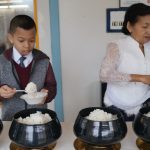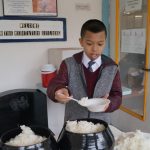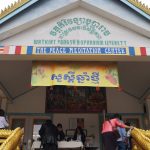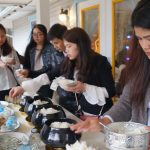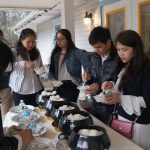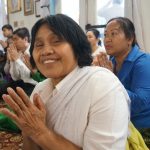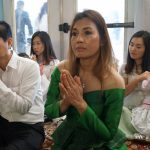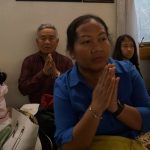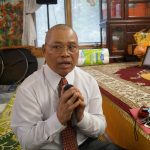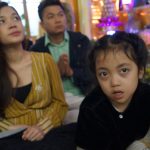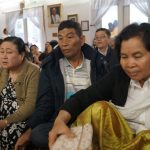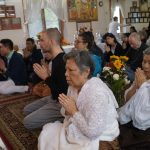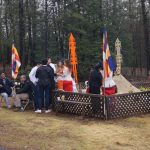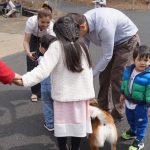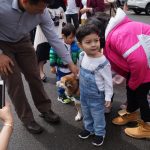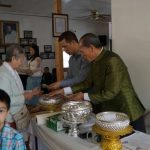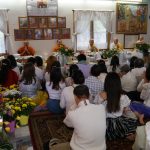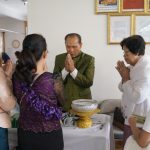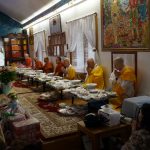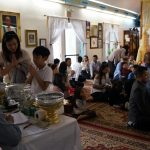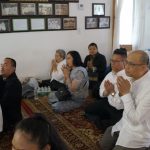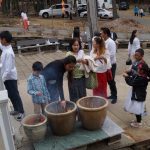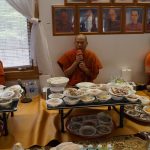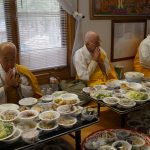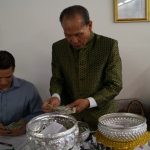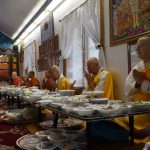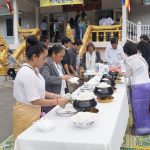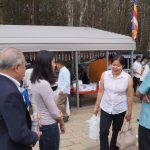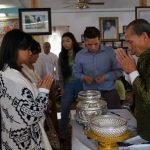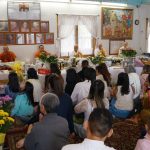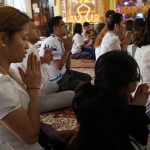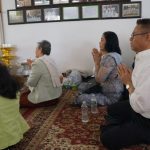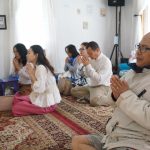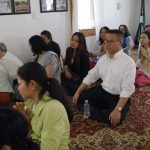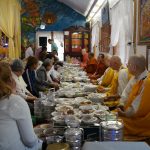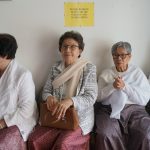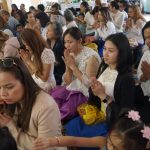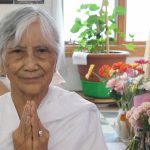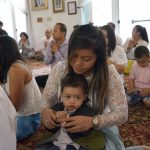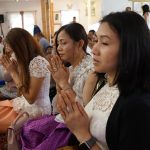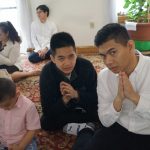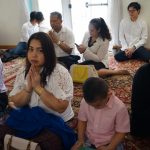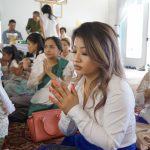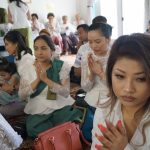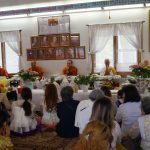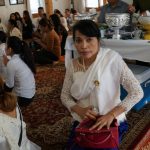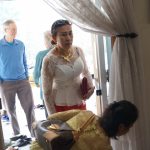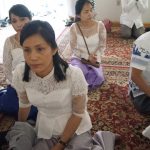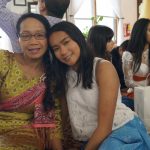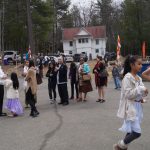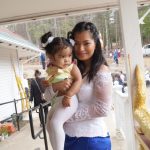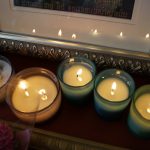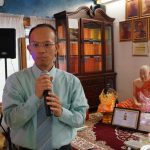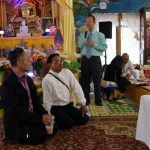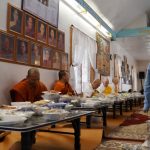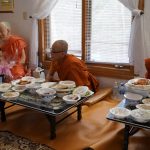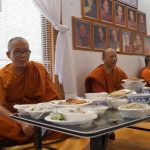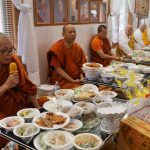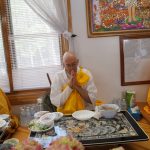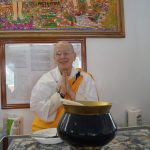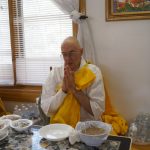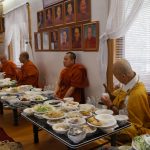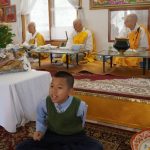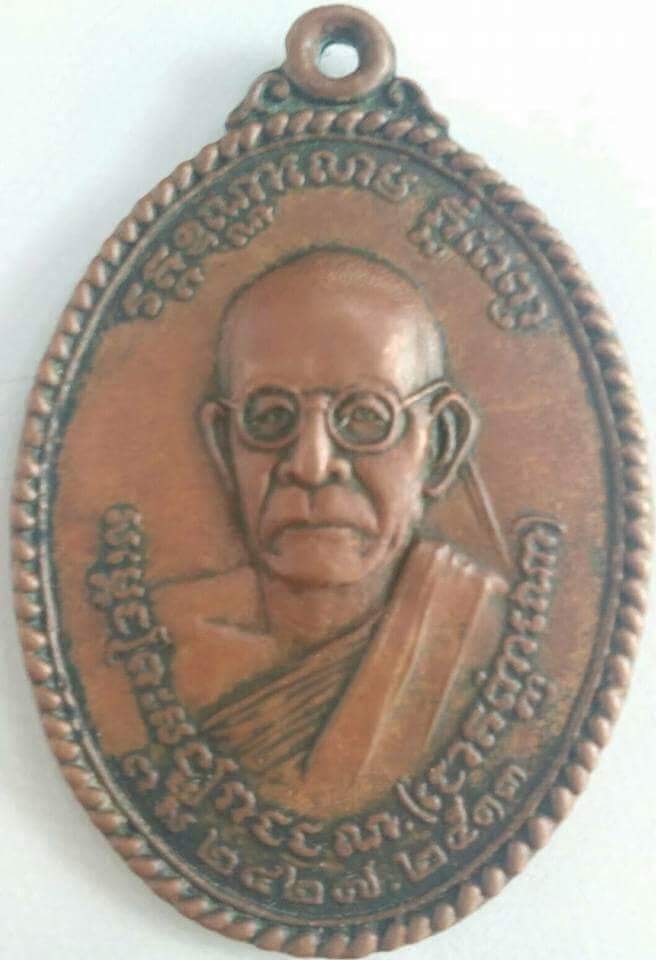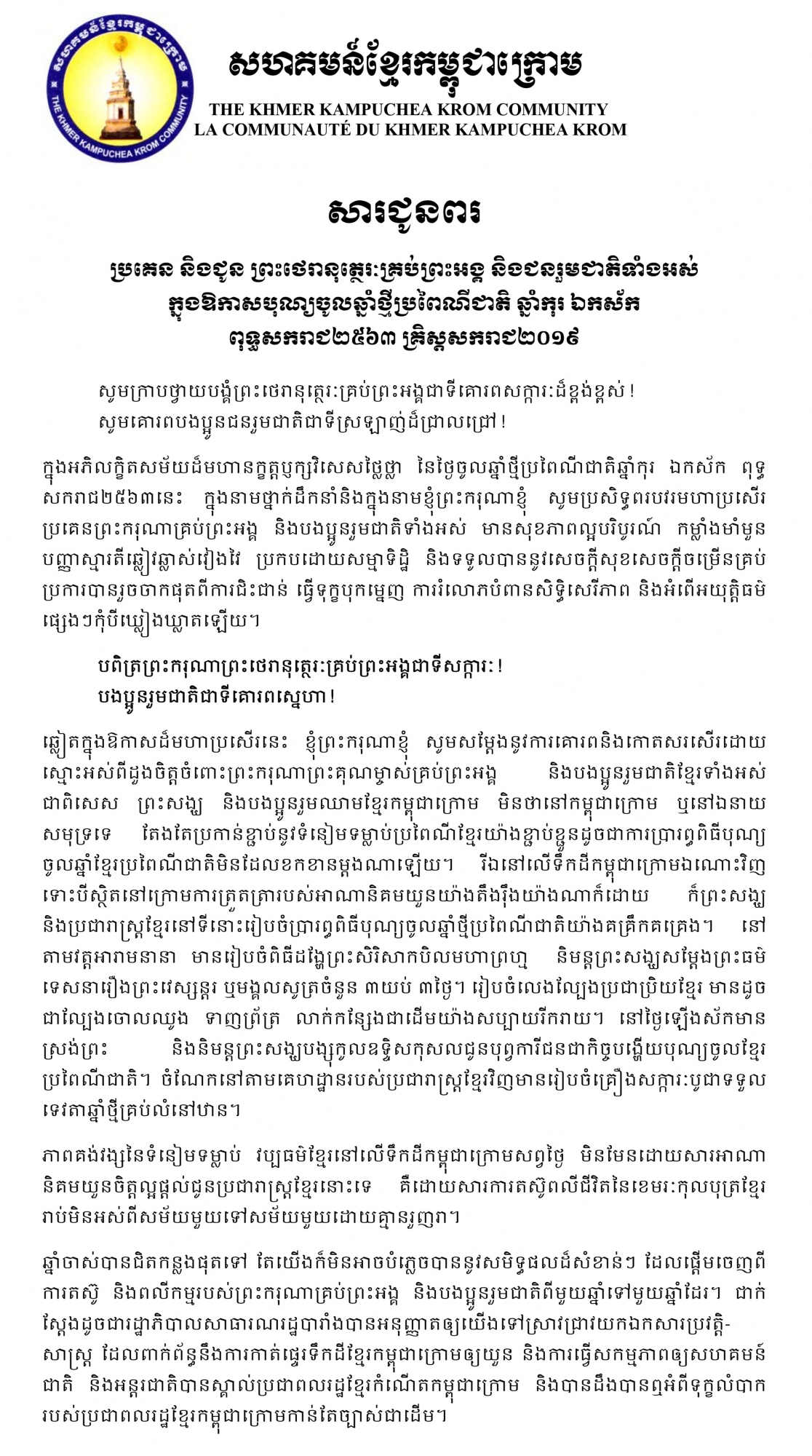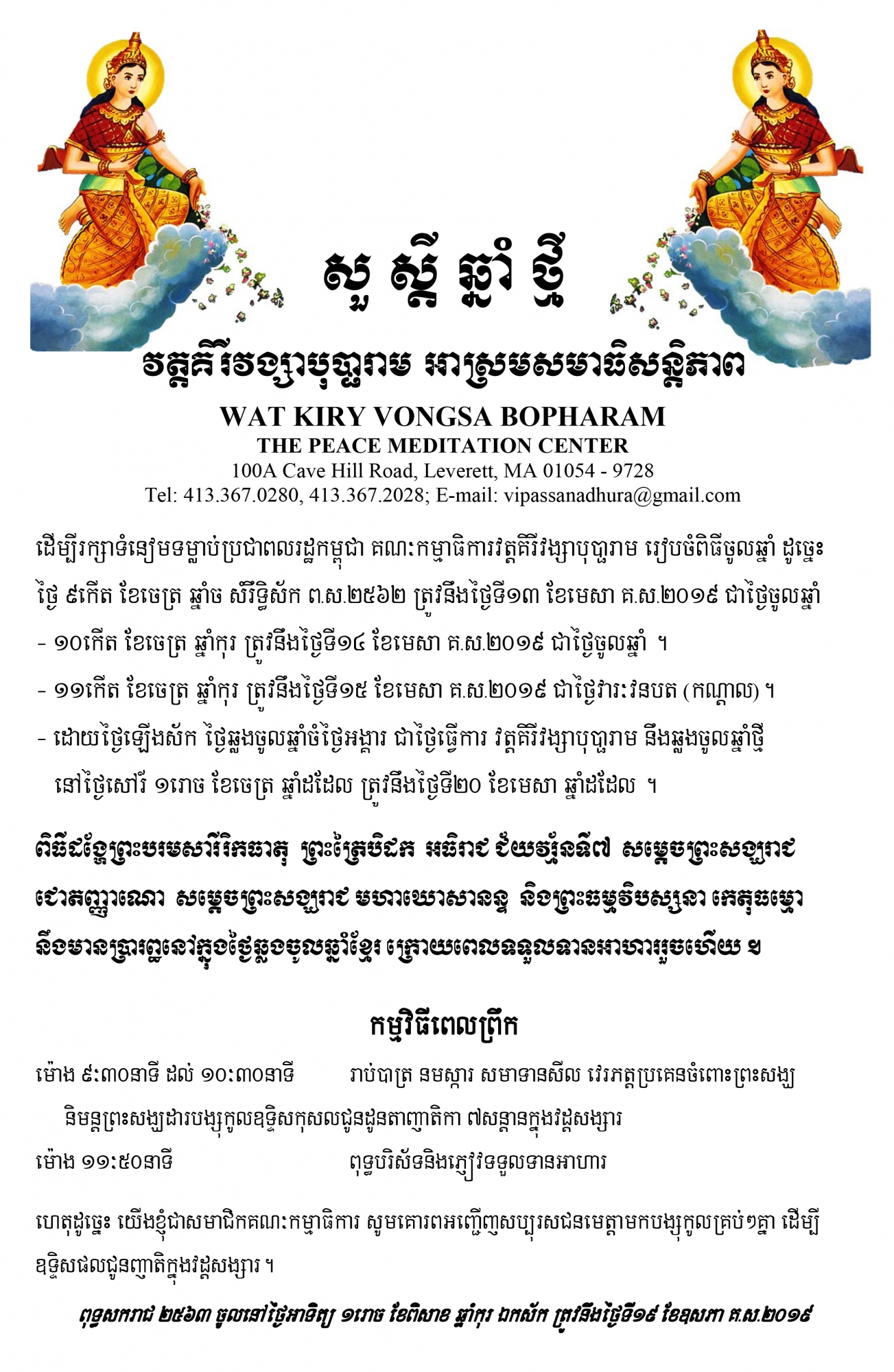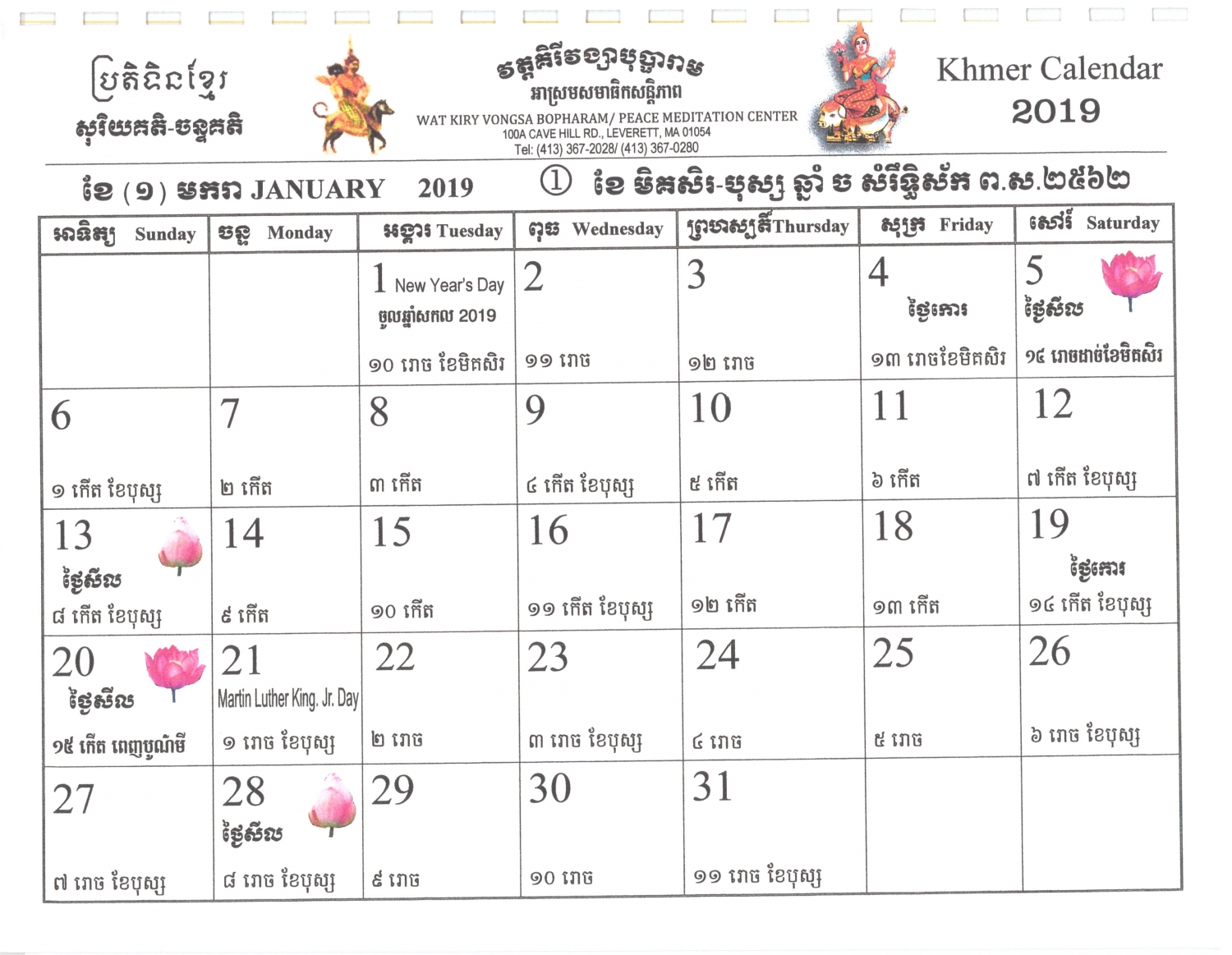Day 2: Meditation Retreats on June 22, 2563/2019
ថ្ងៃទី២ៈ វគ្គសិក្សាសមាធិកម្មដ្ឋាន ថ្ងៃ ៥រោច ខែជេស្ឋ ឆ្នាំកុរ ឯកស័ក ព.ស.២៥៦៣ ត្រូវនឹងថ្ងៃទី២២ ខែមិថុនា គ.ស.២០១៩
Day 2: Meditation Retreats on the 5th Waning Moon of Jeṭṭha B.E.2563 equivalent to June 22, A.D.2019
សីល សមាធិ បញ្ញា Sila Samadhi Panna Virtue, Meditation, Wisdom
ធម៌ទាំងបីនេះនឹងរំដោះមនុស្សលោកណាម្នាក់ឲ្យរួចផុតពីការកើត ចាស់ ឈឺ ស្លាប់។
A person needs these three dhamma to be liberated from worldly life; you’re not born, aging, ill and dying.
Day 1: Meditation Retreats on June 20 – 21, 2563/2019
ថ្ងៃទី១ៈ វគ្គសិក្សាសមាធិកម្មដ្ឋាន ថ្ងៃ ៤រោច ខែជេស្ឋ ឆ្នាំកុរ ឯកស័ក ព.ស.២៥៦៣ ត្រូវនឹងថ្ងៃទី២១ ខែមិថុនា គ.ស.២០១៩
Day 1: Meditation Retreats on the 4th Waning Moon of Jeṭṭha B.E.2563 equivalent to June 21, A.D.2019
សីល សមាធិ បញ្ញា Sila Samadhi Panna Virtue, Meditation, Wisdom
ធម៌ទាំងបីនេះនឹងរំដោះមនុស្សលោកណាម្នាក់ឲ្យរួចផុតពីការកើត ចាស់ ឈឺ ស្លាប់។
A person needs these three dhamma to be liberated from worldly life; you’re not born, aging, ill and dying.
Vesakha Puja at Wat Kiryvongsa Bopharam
ពិធីបុណ្យវិសាខបូជា ប្រារព្ធនៅវត្ដគិរីវង្សាបុប្ផារាម អាស្រមសមាធិសន្ដិភាព ថ្ងៃទី១៨ ខែឧសភា
Saturday the 15th Waxing Moon of Visakha B.E.2562, May 18, A.D.2019 Year of the Pig
Vesakha Puja at Wat Kiryvongsa Bopharam, Buddhist Peace Meditation Center
ពិធីបុណ្យវិសាខបូជា ប្រារព្ធនៅវត្ដគិរីវង្សាបុប្ផារាម អាស្រមសមាធិសន្ដិភាព ថ្ងៃទី១៨ ខែឧសភា
Saturday the 15th Waxing Moon of Visakha B.E.2562, May 18, A.D.2019 Year of the Pig
Appeal: The 70th Annual Kampuchea Krom Loss Commemoration
ថ្ងៃពុធ ៥កើត ខែពិសាខ ឆ្នាំកុរ ឯកស័ក ព.ស.២៥៦២ ត្រូវនឹងថ្ងៃទី៨ ខែឧសភា គ.ស.២០១៩
Wednesday the 5th Waxing Moon of Visakha B.E.2562, May 8, A.D.2019 Year of the Pig
English Language: Appeal70EN
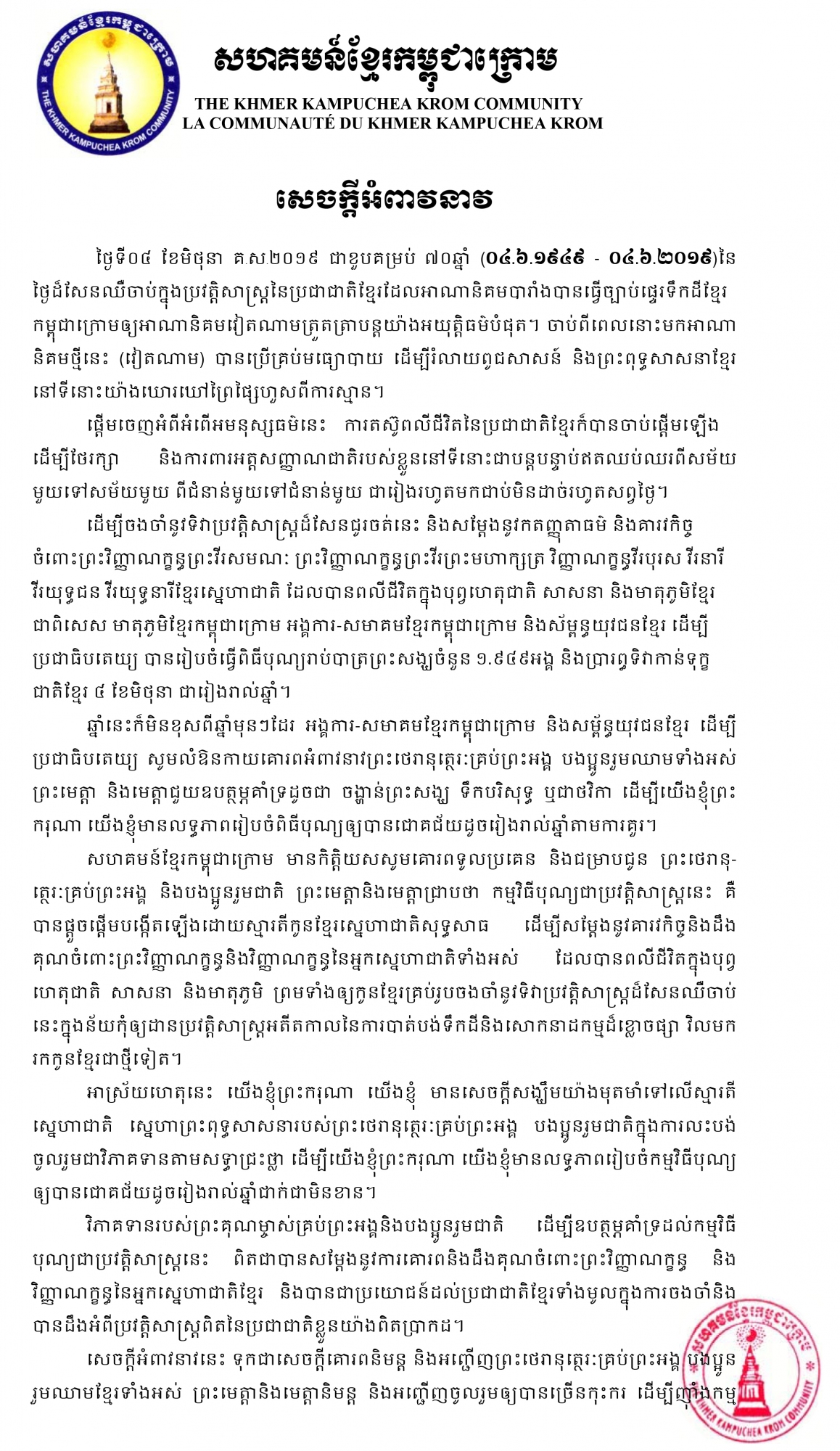
(more…)
Statistics of Cambodian Pagodas in the United States
ចំនួនវត្ដអារាមខ្មែរមាននៅសហរដ្ឋអាមេរិក
ថ្ងៃអង្គារ ៤កើត ខែពិសាខ ឆ្នាំកុរ ឯកស័ក ព.ស.២៥៦២ ត្រូវនឹងថ្ងៃទី៧ ខែឧសភា គ.ស.២០១៩
Tuesday the 4th Waxing Moon of Visakha B.E.2562, May 7, A.D.2019 Year of the Pig
Cambodian Buddhist Temples in USA B.E.2563 A.D.2019
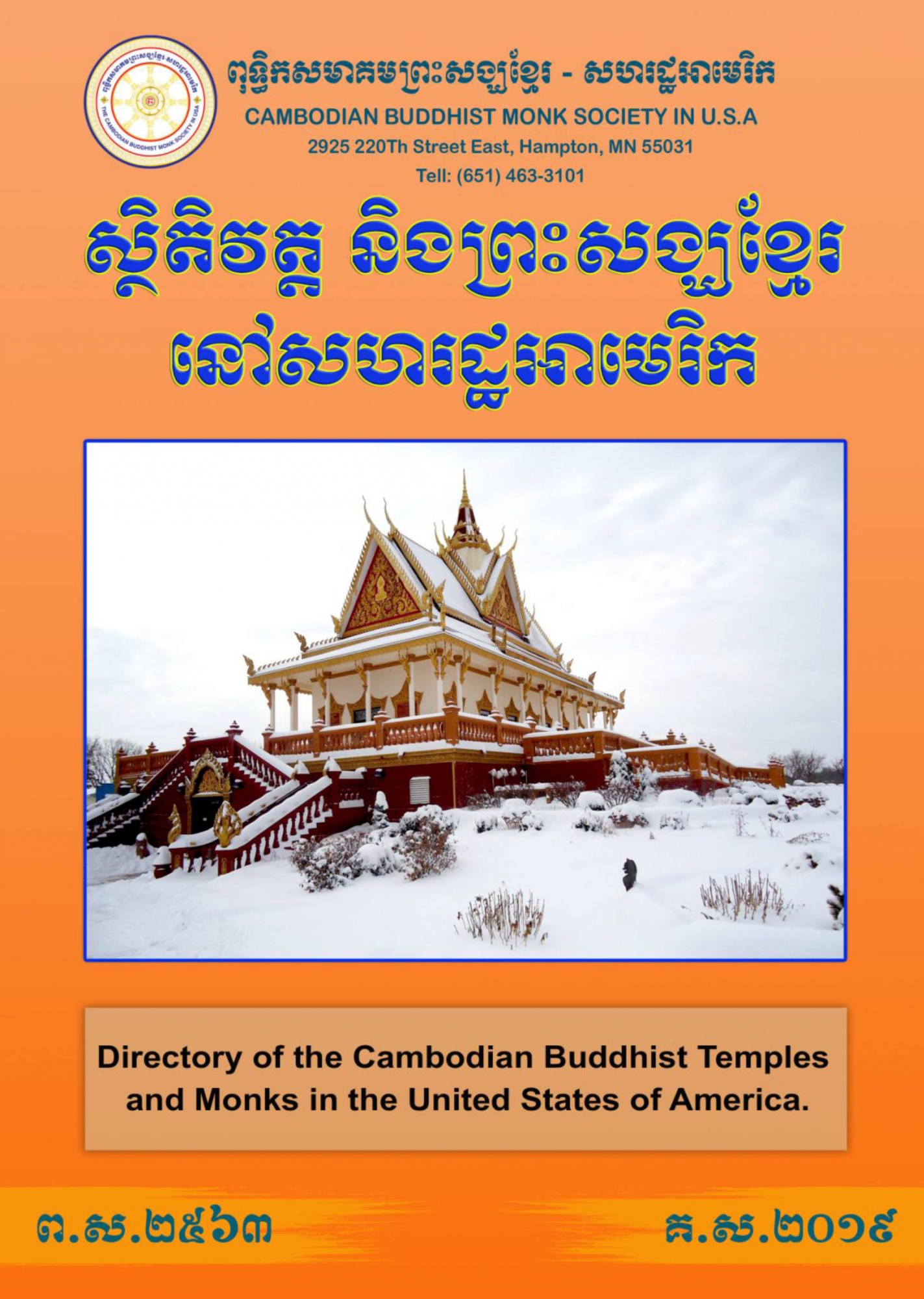
2562 2018 Meditation Documentary
វគ្គសិក្សាសមាធិ វិបស្សនាធុរៈ ប្រព្រឹត្ដនៅព.ស.២៥៦២ គ.ស.២០១៨
A 10-Day Vipassana Retreats
វត្ដគិរីវង្សាបុប្ផារាម អាស្រមសមាធិសន្ដិភាព Wat Kiryvongsa Bopharam, the Peace Meditation Center
100A Cave Hill Road, Leverett, MA 01054 – 9728 U.S.A.
Tel.: 413.367.2028, 413.367.0280
Wat Kiryvongsa Bopharam celebrating Khmer New Year on APR 13 – 14 and 20
វត្តគិរីវង្សាបុប្ផារាម អាស្រមសមាធិសន្ដិភាព ប្រារព្ធពិធីបុណ្យចូលឆ្នាំខ្មែរ នៅថ្ងៃ ៩ ដល់ ១០កើត និង ១រោច ខែចេត្រ ឆ្នាំកុរ ឯកស័ក ព.ស.២៥៦២ ត្រូវនឹងថ្ងៃទី១៣ – ១៤ និង ២០ ខែមេសា គ.ស.២០១៩
The Kiryvongsa Bopharam Pagoda, the Peace Meditation Center celebrating Khmer New Year on Saturday-Sunday the 9th – 10th Waxing Moon and the 1st Waning Moon of Citta, B.E.2562 equivalent to April 13 – 14 and 20, A.D.2019 Year of the Pig
Magha Puja at Wat Kiryvongsa Bopharam on Februay 19, 2019
Māgha Pūjā at Wat Kiryvongsa Bopharam on FEB 19
វត្ដគិរីវង្សាបុប្ផារាម អាស្រមសមាធិសន្ដិភាព ប្រារព្ធពិធីបុណ្យមាឃបូជា នៅវេលាម៉ោង ២ៈ០០នាទីរសៀល ថ្ងៃអង្គារ ១៥កើត ពេញបូណ៌មី ថ្ងៃសីល ឆ្នាំច សំរឹទ្ធិស័ក ព.ស.២៥៦២ ត្រូវនឹងថ្ងៃទី១៩ ខែកុម្ភៈ គ.ស.២០១៩។
The Kiryvongsa Bopharam Pagoda, the Peace Meditation Center observed the Māgha Pūjā at 2:00PM on Tuesday the 15th Waxing Moon of Māgha, Day of Abstinence, B.E.2562 equivalent to February 19, A.D.2019.
Wat Kiryvongsa Bopharam celebrating Khmer New Year on APR 13 – 14
វត្តគិរីវង្សាបុប្ផារាម អាស្រមសមាធិសន្ដិភាព ប្រារព្ធពិធីបុណ្យចូលឆ្នាំខ្មែរ នៅថ្ងៃ ៩ ដល់ ១០កើត ខែចេត្រ ឆ្នាំកុរ ឯកស័ក
ព.ស.២៥៦២ ត្រូវនឹងថ្ងៃទី១៣ – ១៤ ខែមេសា គ.ស.២០១៩
The Kiryvongsa Bopharam Pagoda, the Peace Meditation Center celebrating Khmer New Year on Saturday-Sunday the 9th – 10th Waxing Moon of Citta, B.E.2562 equivalent to April 13 – 14, A.D.2019 Year of the Pig
សម្ដេចព្រះសង្ឃរាជ ជោតញ្ញាណោ
សម្ដេចព្រះសង្ឃរាជ ជោតញ្ញាណោ
Medallion of the late H.H. Jotannano, Supreme Buddhist Patriarch of Cambodia
ព.ស.២៤២៧ – ២៥១៣ គ.ស.១៨៨៣ – ១៩៦៩ B.E.2427 – 2513 A.D.1883 – 1969
ដោយកំណាព្យ និងពុទ្ធភាសិតអប់រំ
ព្រះសម្មាសម្ពុទ្ធផ្ចាញ់មារ The Buddha Defeating Mara
ថ្ងៃចន្ទ ៤កើត ខែចេត្រ ឆ្នាំច សំរឹទ្ធិស័ក ព.ស.២៥៦២ ត្រូវនឹងថ្ងៃទី៨ ខែមេសា គ.ស.២០១៩
Monday the 4th Waxing Moon of Citta B.E.2562, April 8, A.D.2019 Year of the Dog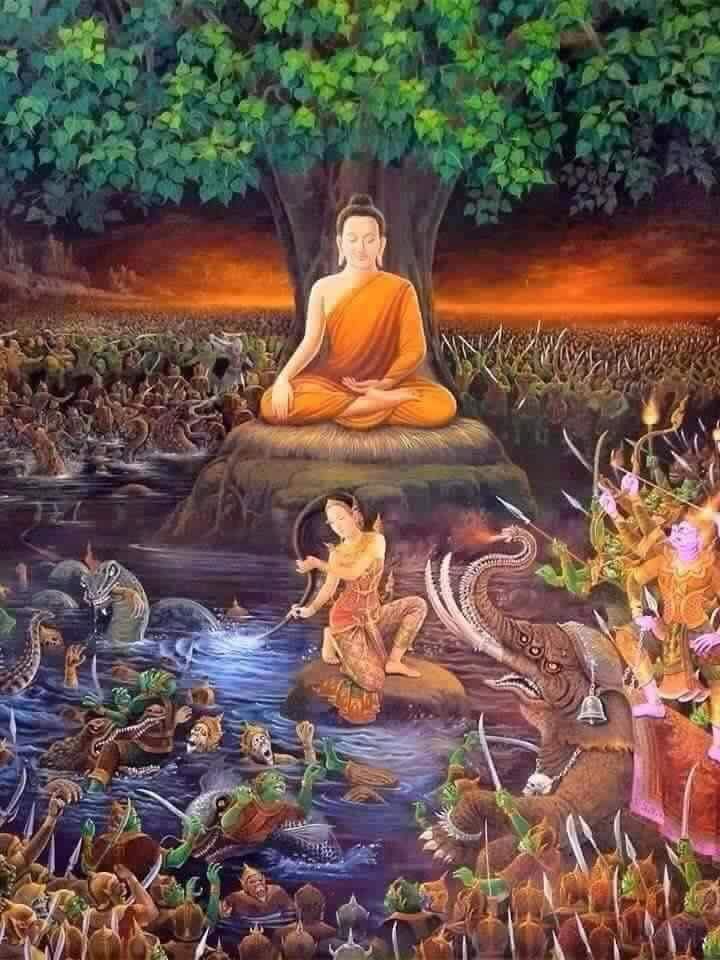
គ្មានការត្រាស់ដឹងរបស់ព្រះសម្មាសម្ពុទ្ធទាំងឡាយណាគ្រប់ព្រះអង្គដែលថាគ្មានមារជាសត្រូវមិនមកផ្ចាញ់ផ្ចាល់់នោះឡើយ ហើយព្រះអង្គមិនមែនចេះខន្តីទុកឲ្យមារជាសត្រូវធ្វើព្យុះភ្លៀងស្រេចតែចិត្តនោះដែរ ព្រះអង្គតបតផ្ចាញ់ផ្ចាល់វិញដោយវិធីរបស់ព្រះអង្គដែលយើងគ្រប់រូបអ្នកគោរពព្រះពុទ្ធសាសនាមិនទាន់យល់ដល់ដូចក្នុងរូបភាពនេះ។
មារមានទាំងនៅក្នុងគន្ធធុរៈ មានទាំងនៅក្នុងវិបស្សនាធុរៈ គឺមាននៅក្នុងចិត្ត មានទាំងនៅខាងក្រៅចាំតែរំខានជុំវិញខ្លួនយើង តែប្រសិនបើយើងមិនតបតកម្ចាត់មារជាសត្រូវទាំងនៅក្នុងចិត្តទាំងនៅចំពោះមុខដោយបញ្ញាទេមាននោះវានៅតែជាឧបស័គ្គរារាំងនូវដំណើរនៃឆាកជីវិតយើងមិនអាចធ្វើដំណើរទៅមុខបានដោយជោគជ័យដល់ទិសដៅបានឡើយ។
ដូច្នេះព្រះអង្គទ្រង់ក៏តបតផ្ចាញ់មារវិញដែរធ្វើឲ្យពួកមារជាសត្រូវរត់ខ្ចាត់ត្រឡប់ទៅវិញអស់ ដូចឈុតឆាកនេះ យើងត្រូវចេះពិចារណាដោយបញ្ញា កុំទុកឲ្យមារជាសត្រូវធ្វើអ្វីមកលើជីវិតយើងស្រេចតែចិត្ត ដូចពាក្យស្លោកពោលថា៖
ផ្លូវវៀចកុំឲ្យបោះបង់ ផ្លូវណាត្រង់ឲ្យដើរផង មិនមែនត្រង់រហូតគេធ្វើបាបខ្លួនប្រាណយើងហើយមិនហ៊ានតបតនោះឡើយ។
មិនគួរចិត្តល្អចំពោះអ្នកដទៃ ហើយឃោរឃៅដាក់ខ្លួនឯងនោះដែរ ចូរពិចារណារកហេតុផលទាំងអស់គ្នា សូមអនុមោទនា។
និព្វាន បកស្រាយដោយសម្ដេចព្រះសង្ឃរាជ ជោតញ្ញាណោ Supreme Patriarch Jotannano on Nibbāna (Nirvāṇa)
និព្វាន បកស្រាយដោយសម្ដេចព្រះសង្ឃរាជ សម្ដេចព្រះមហាសុមេធាធិបតី ជោតញ្ញាណោ
The Revered Supreme Buddhist Patriarch Jotannano of Cambodia on Nibbāna (Nirvāṇa)
Wat Kiryvongsa Bopharam celebrating Khmer New Year on APR 13 – 14, 20
វត្តគិរីវង្សាបុប្ផារាម អាស្រមសមាធិសន្ដិភាព ប្រារព្ធពិធីបុណ្យចូលឆ្នាំខ្មែរ នៅថ្ងៃ ៩ ដល់ ១០កើត និង ១រោច ខែចេត្រ ព.ស.២៥៦២ ត្រូវនឹងថ្ងៃទី១៣ – ១៤ និង ២០ មេសា ខាងមុខ។
The Kiryvongsa Bopharam, the Peace Meditation Center celebrating Khmer New Year on Saturday-Sunday the 9th – 10th Waxing and 1st Waning Moon of Citta, B.E.2562 equivalent to April 13 – 14 and 20.
Wat Kiryvongsa Bopharam celebrating Khmer New Year on APR 13 – 14, 20
វត្តគិរីវង្សាបុប្ផារាម អាស្រមសមាធិសន្ដិភាព ប្រារព្ធពិធីបុណ្យចូលឆ្នាំខ្មែរ នៅថ្ងៃ ៩ ដល់ ១០កើត និង ១រោច ខែចេត្រ ព.ស.២៥៦២ ត្រូវនឹងថ្ងៃទី១៣ – ១៤ និង ២០ មេសា ខាងមុខ។
The Kiryvongsa Bopharam, the Peace Meditation Center celebrating Khmer New Year on Saturday-Sunday the 9th – 10th Waxing and 1st Waning Moon of Citta, B.E.2562 equivalent to April 13 – 14 and 20.
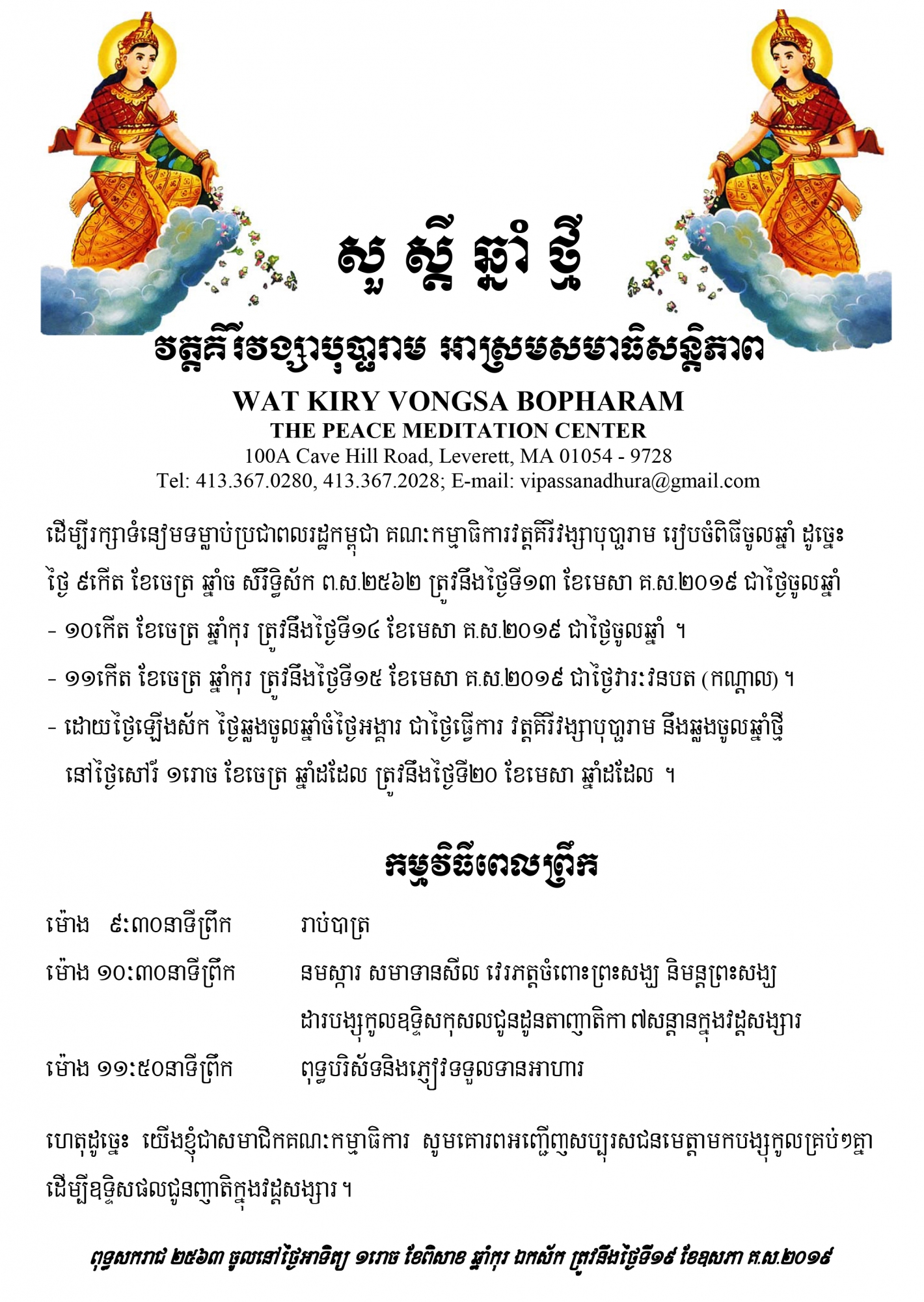
Māgha Pūjā at Wat Kiryvongsa Bopharam on FEB 19
វត្ដគិរីវង្សាបុប្ផារាម អាស្រមសមាធិសន្ដិភាព ប្រារព្ធពិធីបុណ្យមាឃបូជា នៅវេលាម៉ោង ២ៈ០០នាទីរសៀល ថ្ងៃអង្គារ ១៥កើត ពេញបូណ៌មី ថ្ងៃសីល ឆ្នាំច សំរឹទ្ធិស័ក ព.ស.២៥៦២ ត្រូវនឹងថ្ងៃទី១៩ ខែកុម្ភៈ គ.ស.២០១៩។ សូមអញ្ជើញពុទ្ធបរិស័ទចូលរួមតាម
លទ្ធភាព។
The Kiryvongsa Bopharam Pagoda, the Peace Meditation Center to observe the Māgha Pūjā at 2:00PM on Tuesday the 15th Waxing Moon of Māgha, Day of Abstinence, B.E.2562 equivalent to February 19, A.D.2019. Buddhists and the public are welcome.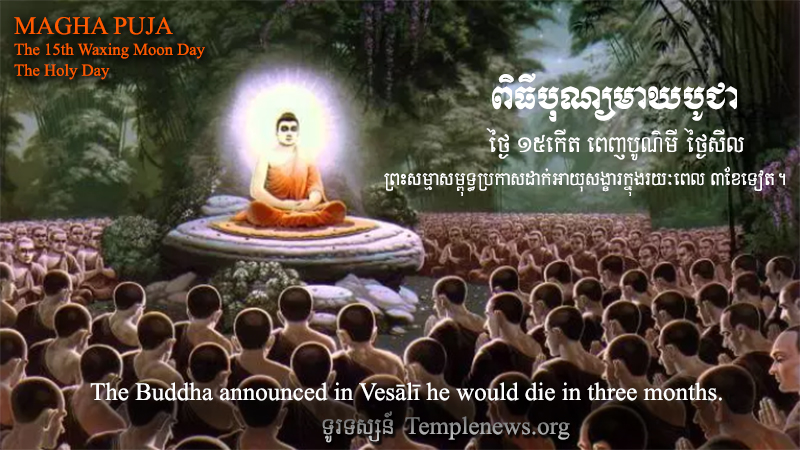
Venue: The Kiryvongsa Bopharam Pagoda, the Peace Meditation Center
100A Cave Hill Road, Leverett, MA 01054 – 9728
Tel.: 413.367.0280, 413.367.2028
Background on មាឃបូជា Māgha Pūjā
Māgha Pūjā is the second most important Buddhist festival, celebrated on the full moon day of the third lunar month in Cambodia, Laos, Thailand, Sri Lanka and on the full moon day of Tabaung in Myanmar. It celebrates a gathering that was held between the Buddha and 1,250 of his first disciples, which, according to tradition, preceded the custom of periodic recitation of discipline by monks. On the day, Buddhists celebrate the creation of an ideal and exemplary community, which is why it is sometimes called Saṅgha Day, the Saṅgha referring to the Buddhist community, and for some Buddhist schools this is specifically the monastic community. In Thailand, the Pāli term Māgha-pūraṇamī is also used for the celebration, meaning ‘to honor on the full moon of the third lunar month’. Finally, some authors have also referred to the day as the Buddhist All Saints Day.
Celebration of Māgha Pūjā is first known of in the modern period, with the institution of it in Thailand, by King Rama IV (A.D.1804 – A.D.1868). It is a public holiday in many Southeast Asian countries and is an occasion when Buddhists go to the temple to perform merit-making activities, such as alms giving, meditation and listening to teachings. It has been proposed as a more spiritual alternative to the celebration of Valentine’s Day.
Māgha is derived from the name of the third month in the traditional Indian lunar calendar, on which the celebration is held. It is also the name of a star, which during this period is close to the full moon. Māgha Pūjā is held on the full moon day. In a leap year, the celebration will be postponed to the full moon day of the fourth lunar month.
Māgha Pūjā day marks an event occurring at the Veḷuvana grove, near Rājagaha (present Rajgir) in northern India, ten months after the enlightenment of the Buddha. The traditional story goes that a meeting is held in the afternoon, that has four characteristics:
1,250 disciples come to see the Buddha that evening without being summoned; These are mostly pupils from the Buddha’s recently converted disciples, such as the three Kassapa brothers, and the monks Sāriputta and Mogallāna.
All of them are Arahants, enlightened disciples;
All have been ordained by the Buddha himself, and therefore are his direct spiritual descendants;
It is the full-moon day of the third lunar month.
Because of these four factors, Māgha Pūjā is also known as the Fourfold Assembly Day. On this occasion, the Buddha teaches those arahants a summary of Buddhism, called the Ovādapatimokkha. In these, three principles are given:
“The non-doing of evil / the full performance of what is wholesome / the total purification of the mind.”
This is followed by a formulation of Buddhist ideals:
“Patience (and) forbearance are the highest austerity. The awakened ones say nibbāna is the highest. One is certainly not a wanderer if one injures others; one is not an ascetic if one harms another.”
Finally, the last stanza is about the path of religious practice:
“Not abusing, not injuring, and restraint under the rules of discipline, and knowing moderation in eating, and secluded lodgings, and exertion in respect of higher thought, this is the teaching of the awakened ones.”
According to the traditional Pāli commentaries, the Buddha continued to teach this summary for a period of twenty years, after which the custom was replaced by the recitation of the monastic code of discipline by the Saṅgha themselves. On Māgha Pūjā, Buddhists celebrate the creation of an ideal and exemplary community.
Māgha Pūjā is also the day that the Buddha is believed to have announced in Vesālī he would die in three months, after which a miraculous earthquake followed. Moreover, in Sri Lanka, it is considered the day that the Buddha appointed his two main disciples, the monks Sāriputta and Moggallāna. Apart from the religious meaning, Māgha Pūjā also reflects the Southeast Asian agricultural year, as it is celebrated after the harvest.
It is unknown how traditional Buddhist societies celebrated this event in pre-modern times, but in Thailand, the first known instance was during the reign of the Thai king Rama IV (1804–68), who instituted it. He first held it in the palace only. In the evening, 31 monks would recite the Ovādapatimokkha, lit lanterns around the ubosot (ordination hall), and give a sermon about the same Ovādapatimokkha. A recitation text used for this occasion is attributed to Rama IV. Rama IV’s successor Rama V (A.D.1853 – A.D.1910) expanded the practice and organized it as a national celebration in the Temple of the Emerald Buddha. From Thailand, the practice spread to neighboring countries. Already in A.D. 1937, the ceremony was widely held and observed in Thailand.
Māgha Pūjā is a day that laypeople make merit. Monastics and devotees will hold processions, light candles, and make offerings. Māgha Pūjā is celebrated most extensively in Cambodia and Thailand, but it is a national holiday in most Southeast Asian countries, such as Laos, Myanmar and Cambodia.
In Thailand, Māgha Pūjā was instituted by Rama IV. It is currently designated as a national holiday, on which sale of alcohol is strictly prohibited. On the evening of Māgha Pūjā, most temples in Thailand hold a candlelight procession. Furthermore, people will make merit by going to temples and by joining in with activities, such as listening to teachings, giving alms, etc. At times, special events are also held, such as a recital of the entire Buddhist scriptures and ceremonies for avowing oneself as a Buddhist lay person. In A.D.2006, the government of Thailand made an announcement that Māgha Pūjā should be celebrated as a “national day of gratitude.” Māgha Pūja was therefore presented as a day of spiritual love and gratitude instead.
In Sri Lanka and Cambodia, Māgha Pūjā is also observed. In Chinese communities, as well as in Myanmar, a similar festival as Māgha Pūjā is observed. The Burmese people celebrate this on the full moon of the month Tabaung according to their traditional calendar. Fifteen days before this full moon day, a Shwedagon Pagoda Festival is held, on which a ceremony is held for offerings to the 28 Buddhas (from Taṇhaṅkara to Gotama Buddha), followed by a 10-day, continuous recital of Buddhist texts. Burmese devotees make merits and meditate during this period.
Māgha Pūjā has also become a popular event among Western Buddhist converts in the West. Wikipedia
A 10-Day Meditation Retreats in Leverett, Massachusetts
រៀនធ្វើសមាធិ វិបស្សនា និងអប់រំចិត្ត
INTERESTED IN LEARNING MEDITATION
A 10-Day Meditation (Samadhi) & Vipassana (Insight Meditation) Retreats
When: JUN 20 – JUL 01, B.E.2563 A.D.2019
Location: The Kiryvongsa Bopharam Pagoda, the Peace Meditation Center, Leverett, Massachusetts United States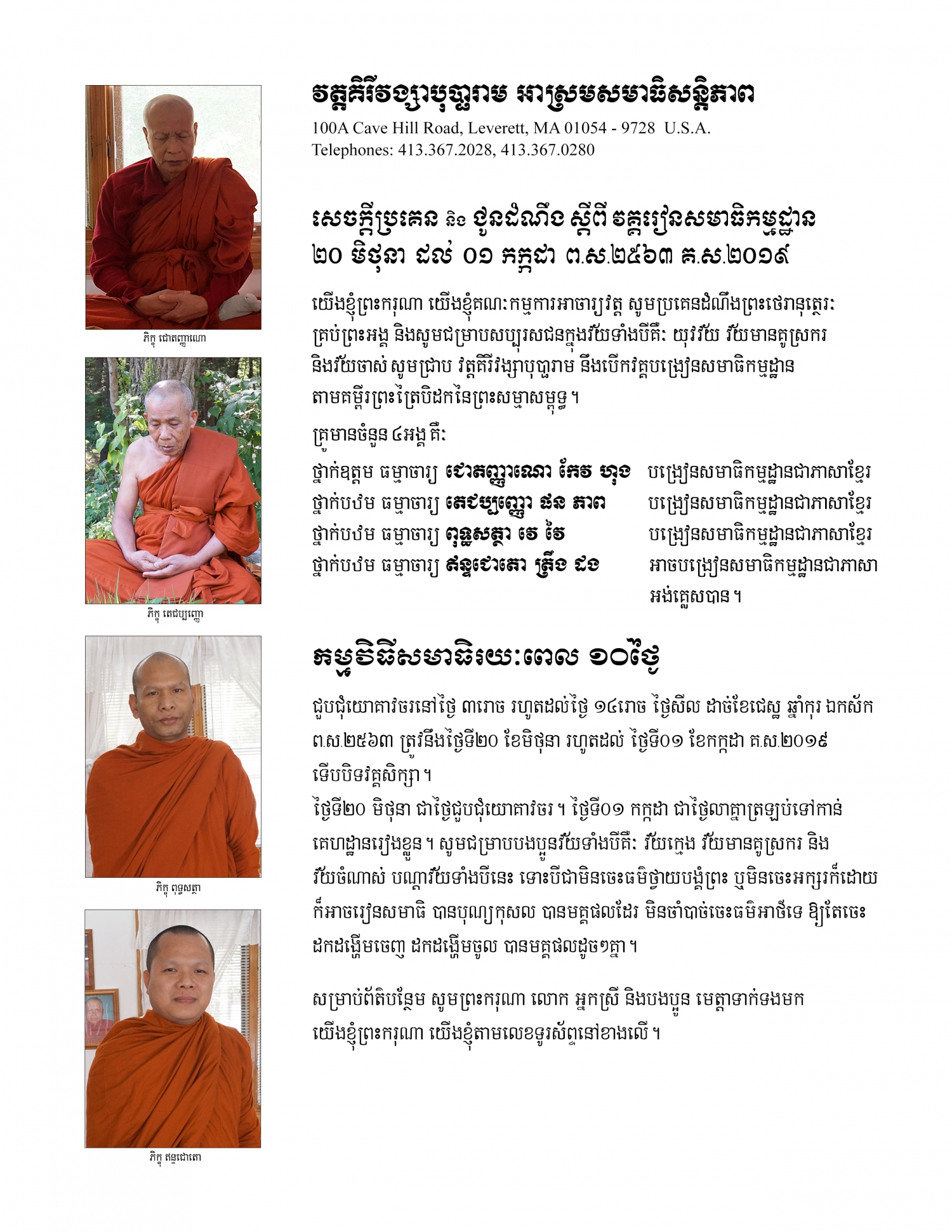 Vipassana and meditation teachers are: Bhikkhu Jotannano, Bhikkhu Dejapanno, Bhikkhu Buddhasaddha, Bhikkhu Indajoto.
Vipassana and meditation teachers are: Bhikkhu Jotannano, Bhikkhu Dejapanno, Bhikkhu Buddhasaddha, Bhikkhu Indajoto.
The meditation technique is taught strictly in accordance to the Buddhist Tipitaka (The Buddhist Canon).
To learn more about last year’s program. Click on hyperlink.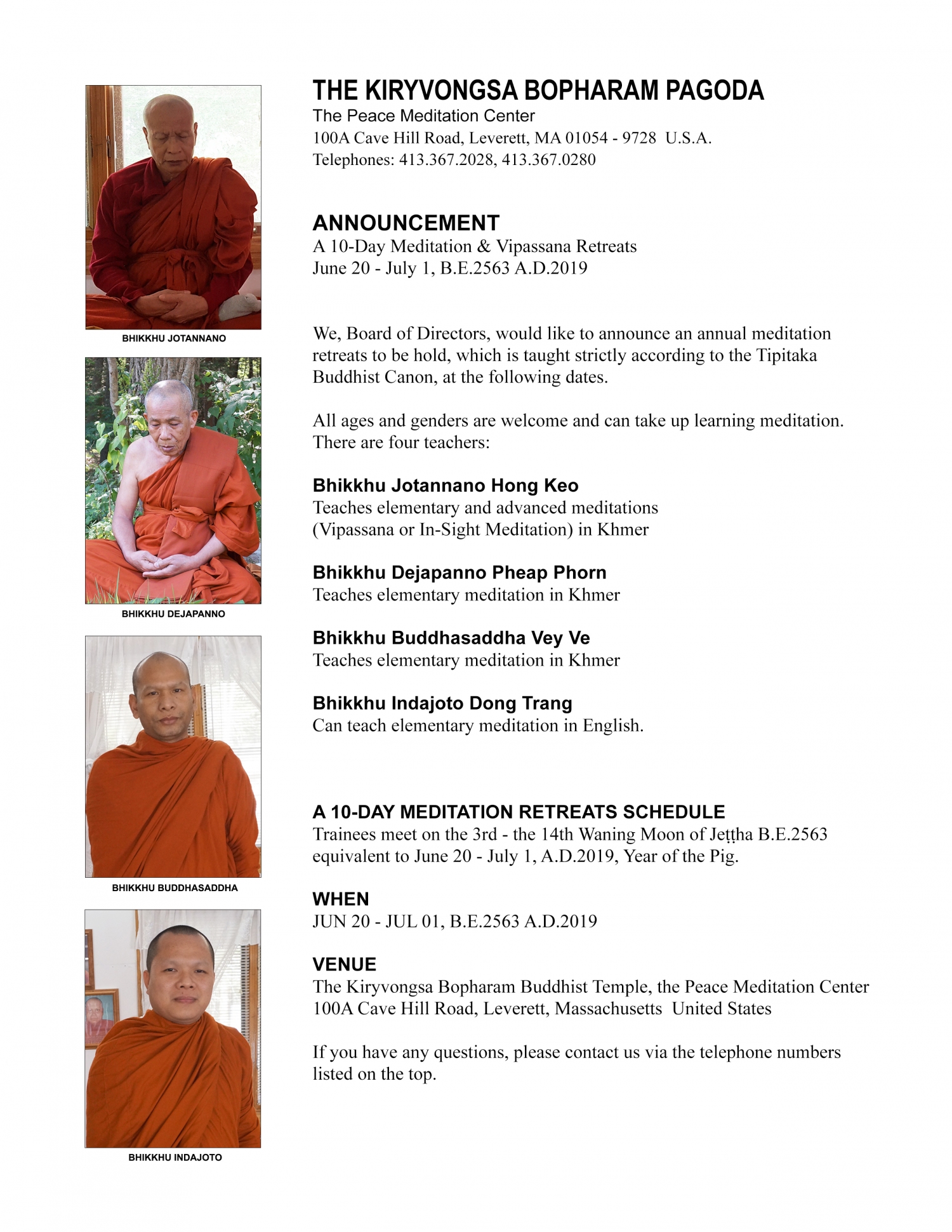 Modes of Transportation
Modes of Transportation
By Air: You are suggested to stop at Bradley International Airport in Connecticut. It is a 1-hour drive to the temple.
By Land: You are suggested to stop in Amherst bus station if you arrive by bus from out of state or Canada. It is about a 25-minute drive to the temple.
Please DOWNLOAD PROGRAM and REGISTRATION FORM. Complete the registration form and send it back as soon as possible.
Download Khmer PDF: Registration2563
Download English PDF: RegistrationEN2563
Contact Info:
The Kiryvongsa Bopharam Pagoda, the Peace Meditation Center
100A Cave Hill Road, Leverett, MA 01054 – 9728 U.S.A.
Tel.: 413.367.2028, 413.367.0280
Advance ENROLLMENT opens
5 precepts equal peace
ថ្ងៃព្រហស្បតិ៍ ៦កើត ខែមិគសិរ ឆ្នាំច សំរឹទ្ធិស័ក ព.ស.២៥៦២ ត្រូវនឹងថ្ងៃទី១៣ ខែធ្នូ គ.ស.២០១៨
Thursday the 6th Waxing Moon of Māgasira B.E.2562, December 13, A.D.2018 Year of the Dog
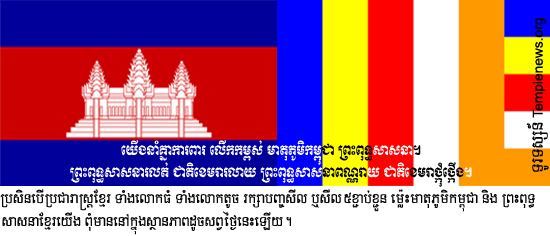
Pali training rules
The following are the five precepts (pañca-sikkhāpada) or five virtues (pañca-sīla) rendered in English and Pali:
1. I undertake the training rule to abstain from killing. Pāṇātipātā veramaṇī sikkhāpadaṃ samādiyāmi.
បាណាតិបាតា វេរមណី សិក្ខាបទំ សមាទិយាមិ
ខ្ញុំព្រះករុណាសូមសមាទាននូវសិក្ខាបទគឺចេតនាជាហេតុវៀរចាកកិរិយាធ្វើសត្វមានជីវិតឲ្យធ្លាក់ចុះកន្លង គឺសម្លាប់សត្វ។
2. I undertake the training rule to abstain from taking what is not given. Adinnādānā veramaṇī sikkhāpadaṃ
samādiyāmi.
អទិន្នាទានា វេរមណី សិក្ខាបទំ សមាទិយាមិ
ខ្ញុំព្រះករុណាសូមសមាទាននូវសិក្ខាបទគឺចេតនាជាហេតុវៀរចាកកិរិយាកាន់យកនូវវត្ថុដែលគេមិនបានឲ្យដោយកាយ ឬដោយវាចា។
3. I undertake the training rule to avoid sexual misconduct. Kāmesumicchācāra veramaṇī sikkhāpadaṃ samādiyāmi.
កាមេសុ មិច្ឆាចារា វេរមណី សិក្ខាបទំ សមាទិយាមិ
ខ្ញុំព្រះករុណាសូមសមាទាននូវសិក្ខាបទគឺចេតនាជាហេតុវៀរចាកកិរិយាប្រព្រឹត្ដខុសក្នុងកាមទាំងឡាយ។
4. I undertake the training rule to abstain from false speech. Musāvādā veramaṇī sikkhāpadaṃ samādiyāmi.
មុសាវាទា វេរមណី សិក្ខាបទំ សមាទិយាមិ
ខ្ញុំព្រះករុណាសូមសមាទាននូវសិក្ខាបទគឺចេតនាជាហេតុវៀរចាកកិរិយាពោលនូវពាក្យកុហក។
5. I undertake the training rule to abstain from fermented drink that causes heedlessness.
Surāmerayamajjapamādaṭṭhānā veramaṇī sikkhāpadaṃ samādiyāmi.
សុរាមេរយមជ្ជប្បមាទដ្ឋានា វេរមណី សិក្ខាបទំ សមាទិយាមិ
ខ្ញុំព្រះករុណាសូមសមាទាននូវសិក្ខាបទគឺចេតនាជាហេតុវៀរចាកហេតុជាទីតាំងនៃសេចក្ដីប្រមាទ គឺផឹកនូវទឹកស្រវឹង គឺសុរា
និងមេរ័យ។
For more on the first precept, see ahimsa. In the fifth precept sura, meraya and majja are kinds of alcoholic beverages. In some modern translations, Surāmerayamajjapamādaṭṭhānā, is rendered more broadly, variously, as, intoxicants, liquor and drugs, etc. Courtesy wikipedia
MEDITATION DOCUMENTARIES
DHAMMA TALK BY VEN. KETODHAMMO
ព្រះធម្មទេសនាសំដែងដោយ ព្រះធម្មវិបស្សនា កេតុធម្មោ សំ ប៊ុនធឿន
Dhamma talk by the late and renowned Cambodian Vipassana Buddhist Master Ven. Ketodhammo Som Bunthoeun.
TEMPLENEWS TV SHOWS
Watch our shows on LTC – Channel 95
Broadcast hours | Fridays: 4 – 5 pm, 8 – 9 pm
Tuesdays 11 am - 12 pm
Email: templenewscast@yahoo.com
Phone: 978.853.9623
Website: templenews.org
Youtube: www.youtube.com/templenewstv
To find out more, including how to control cookies, see here: Cookie Policy
